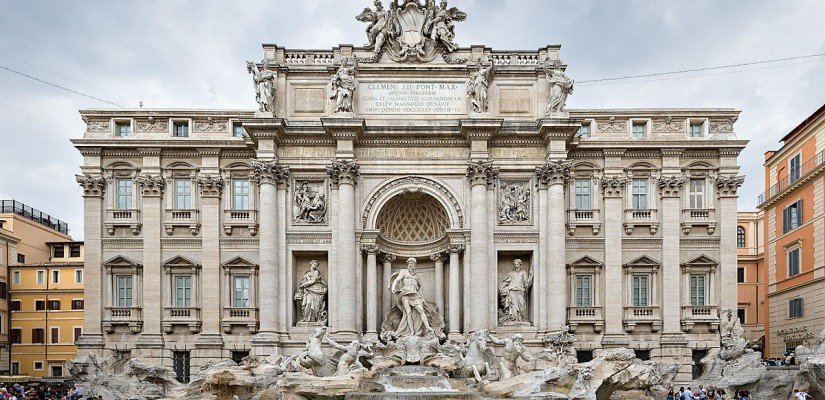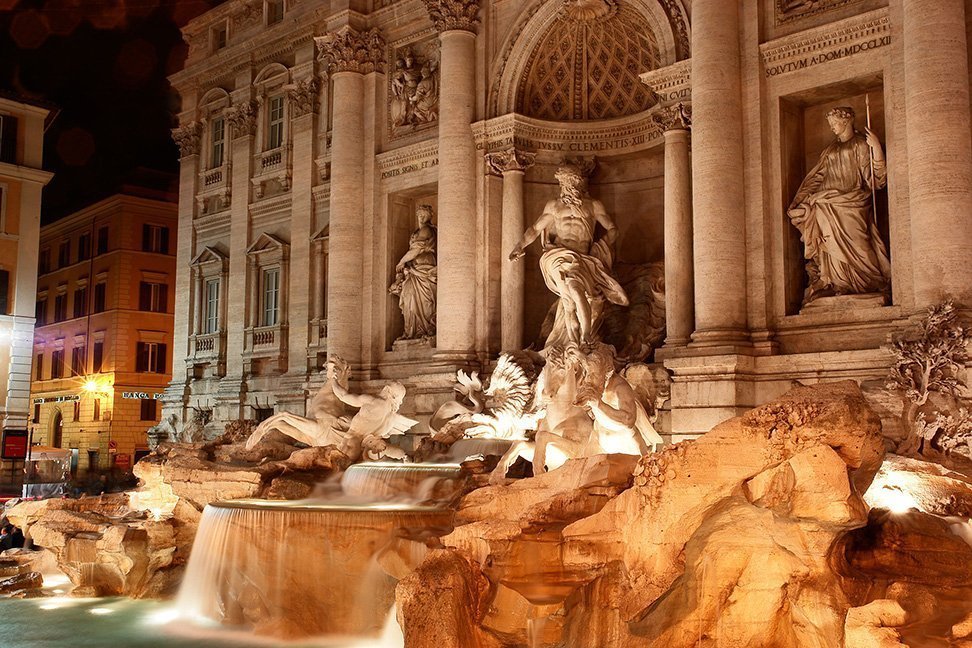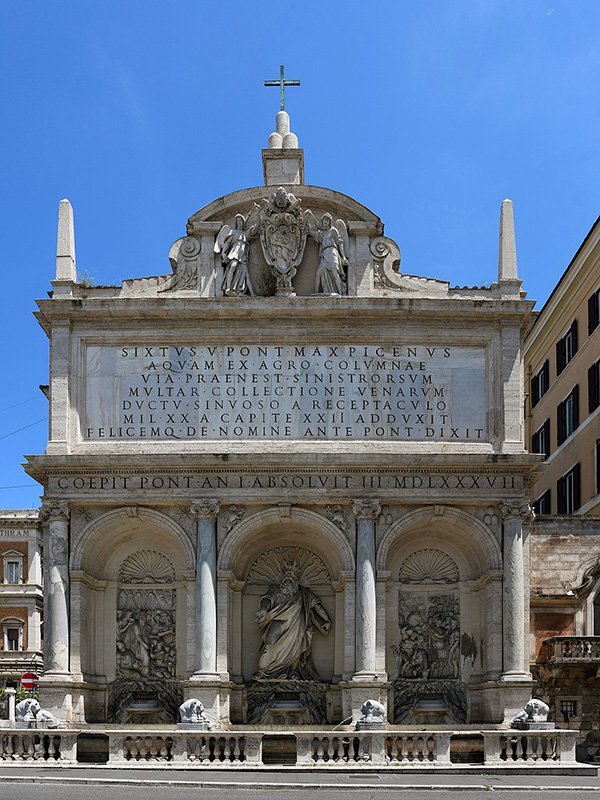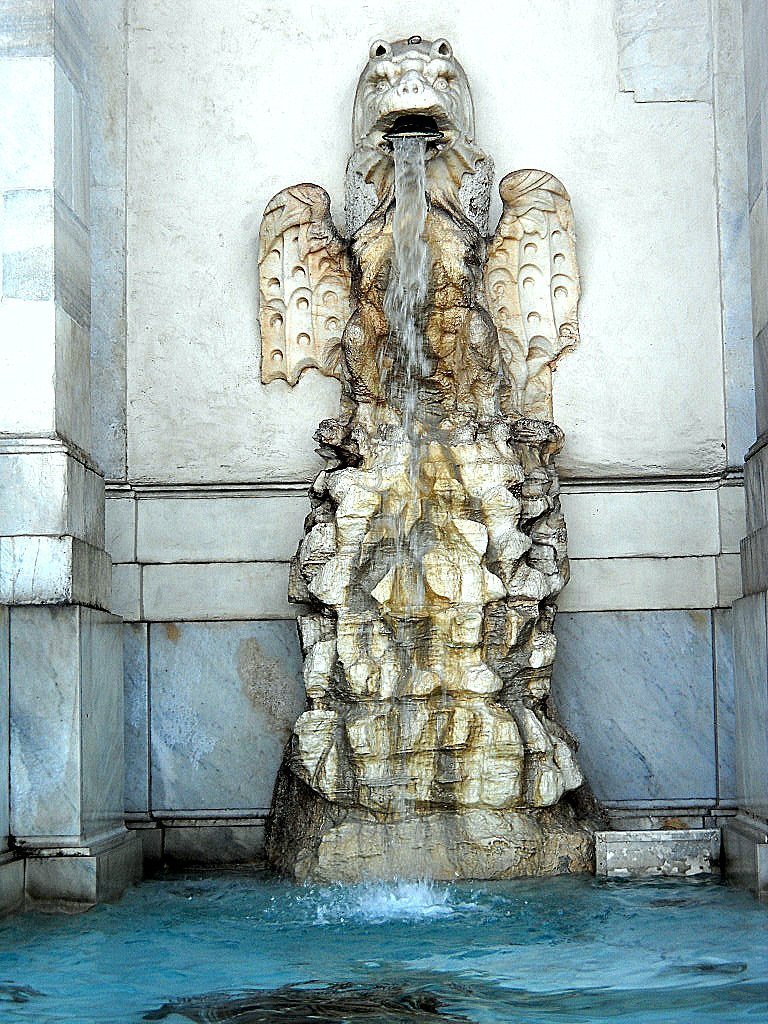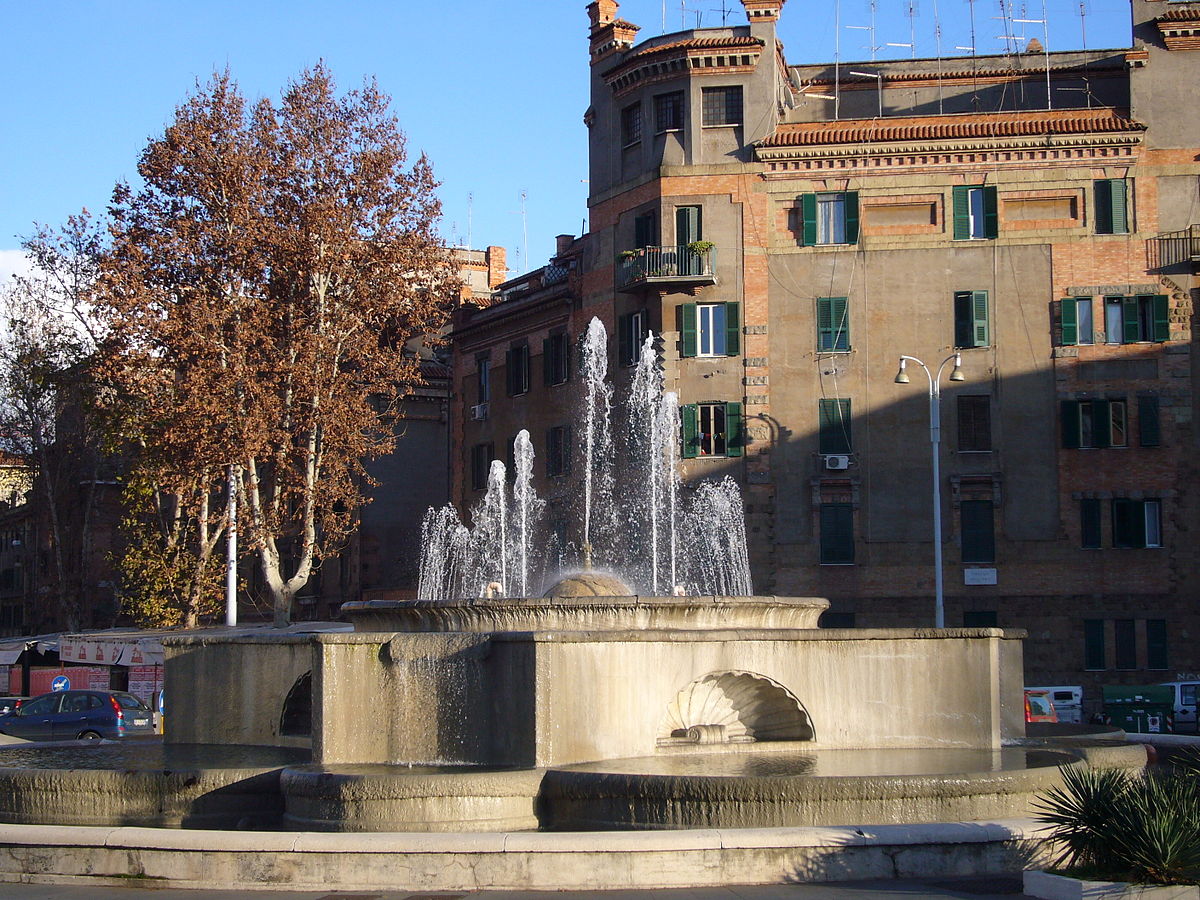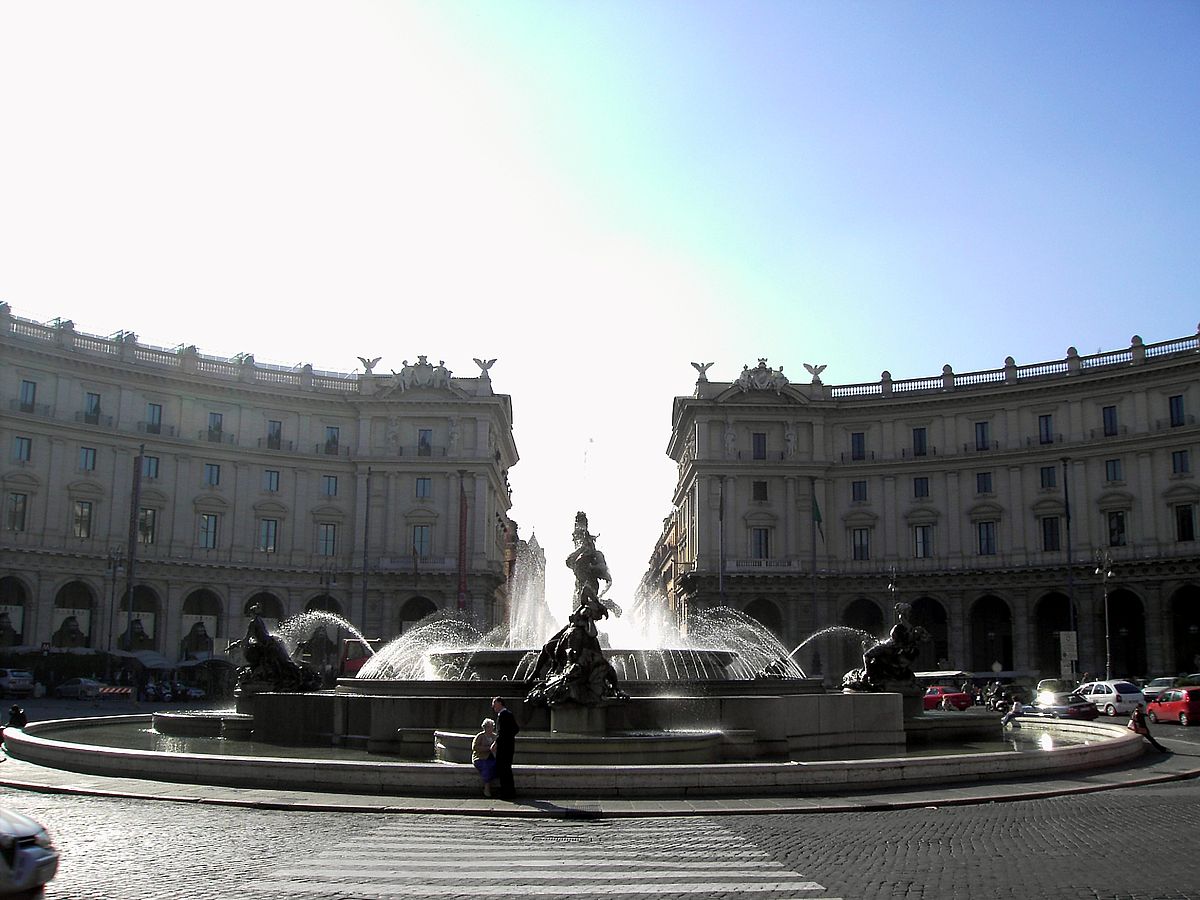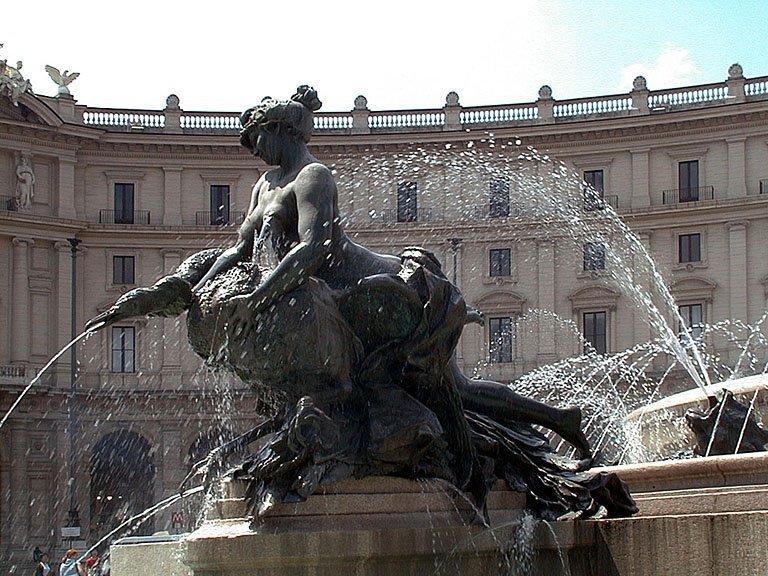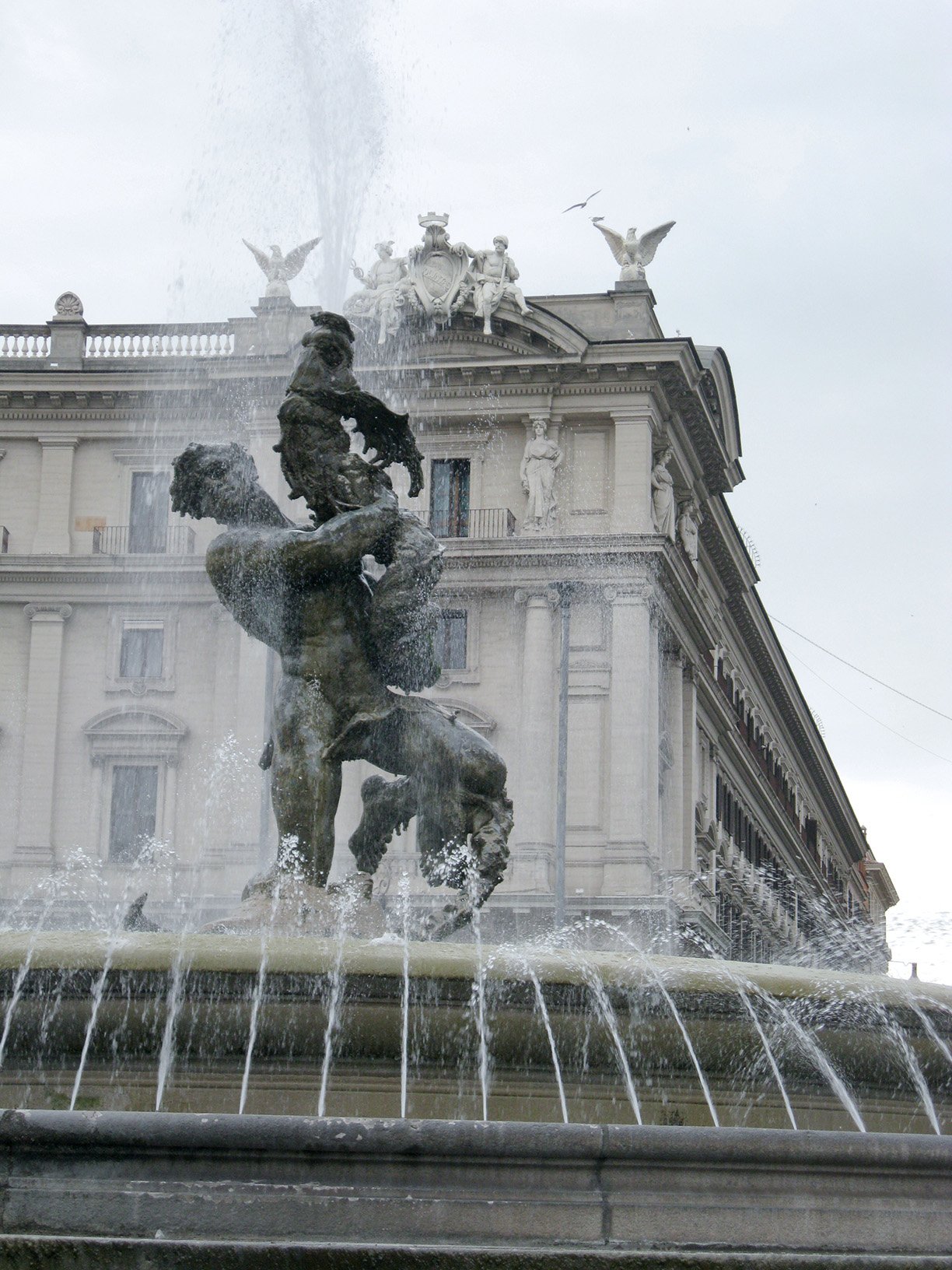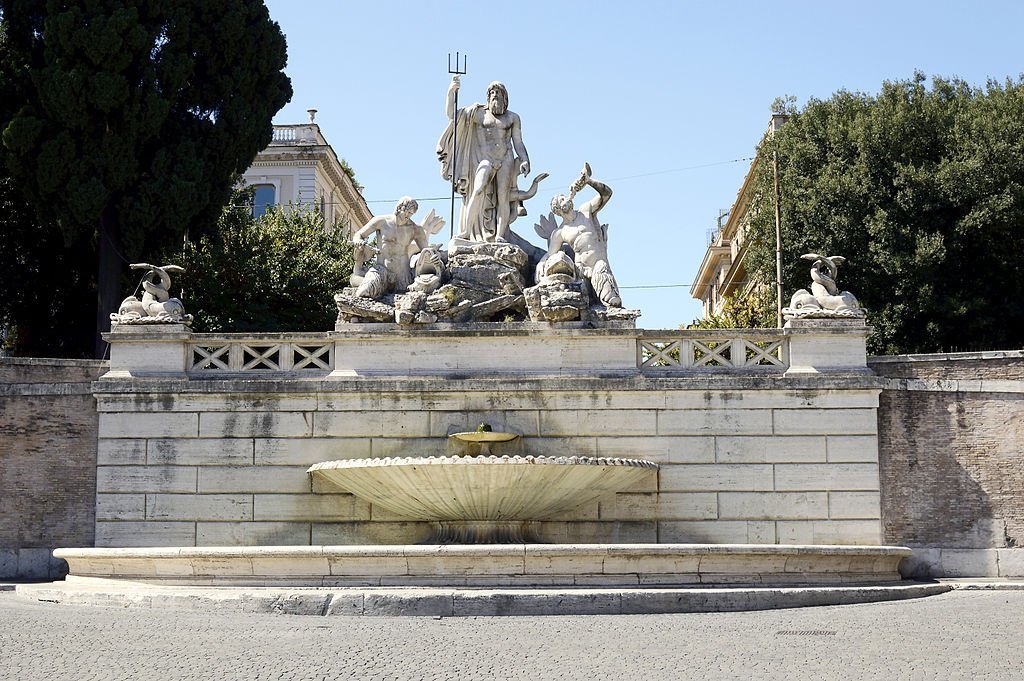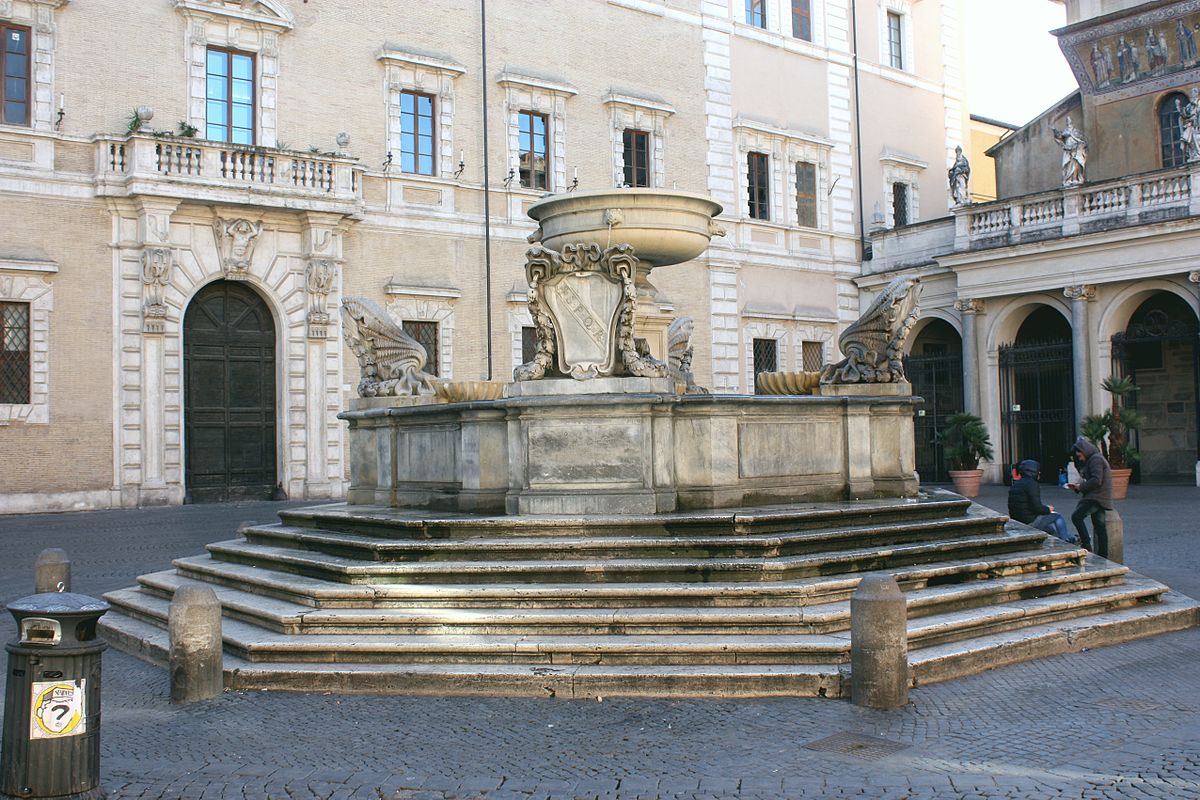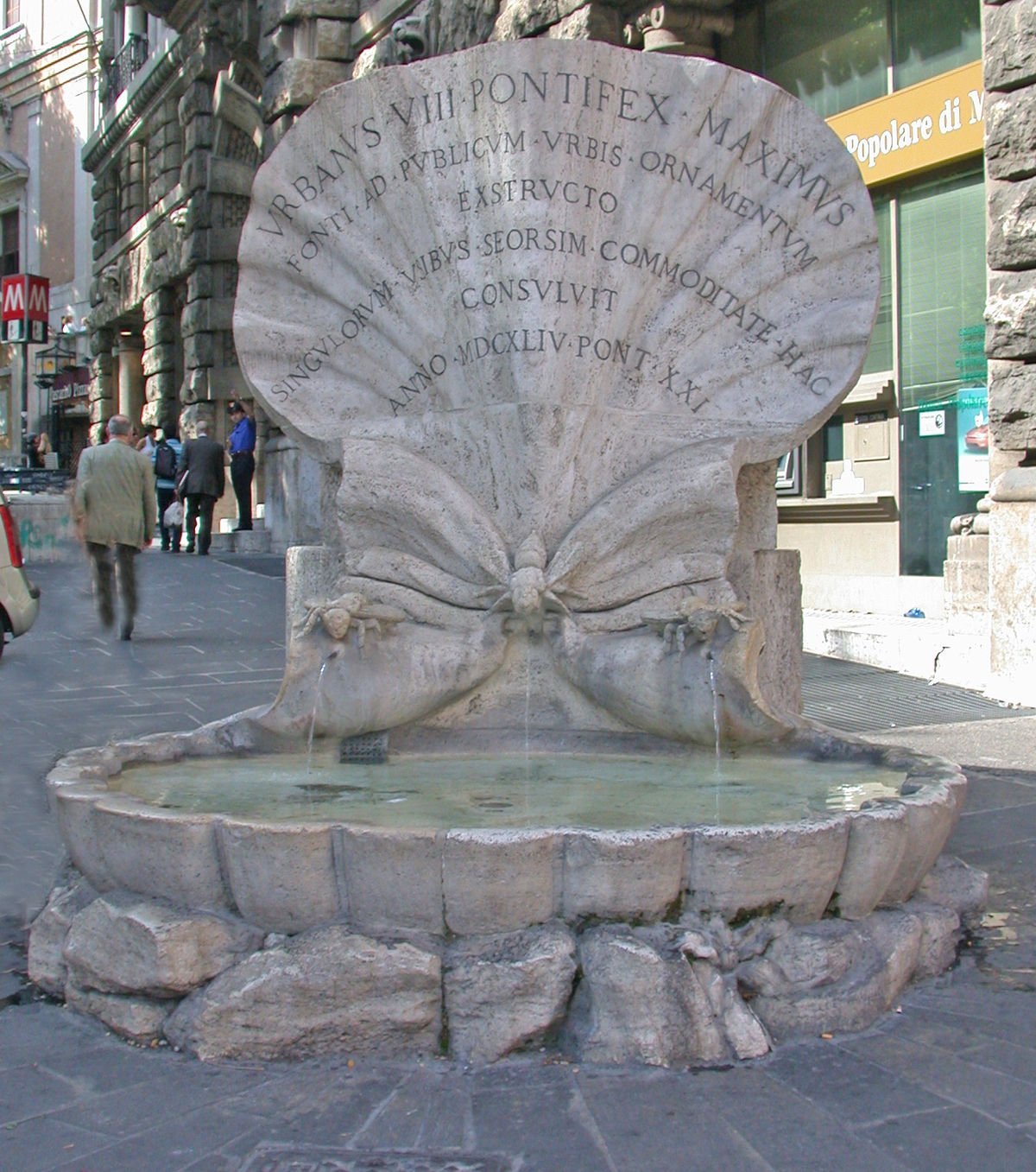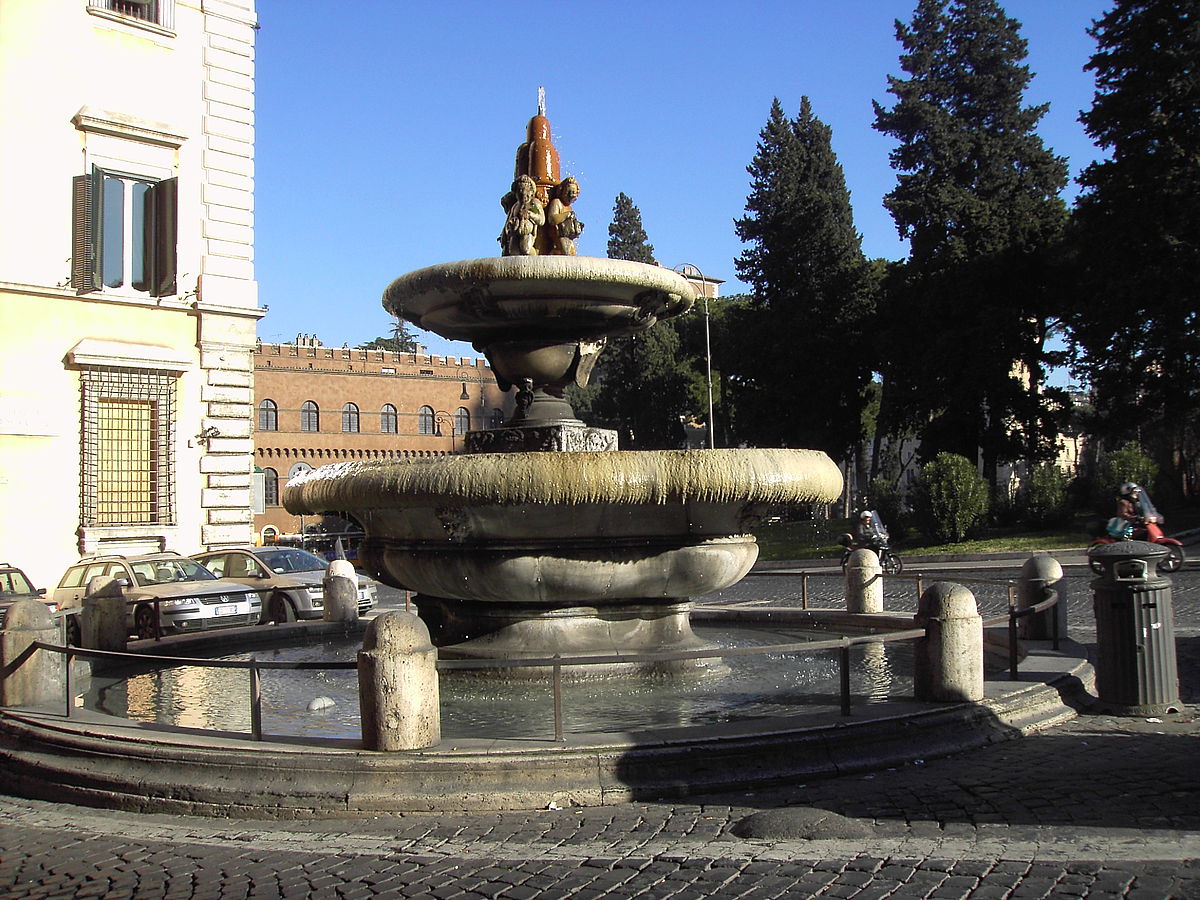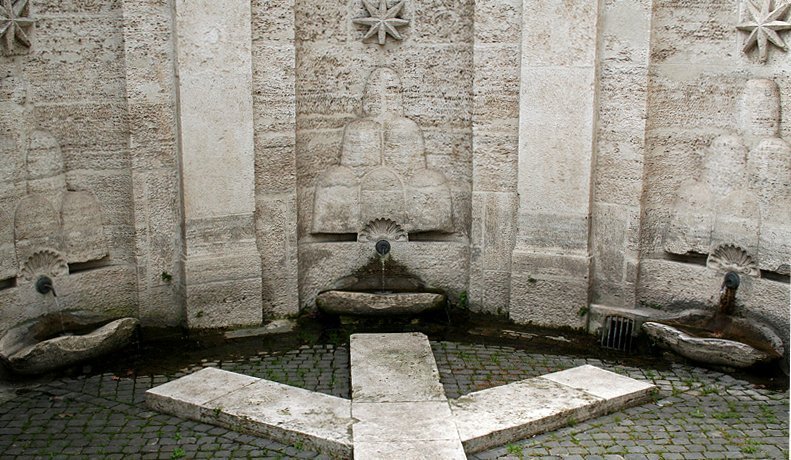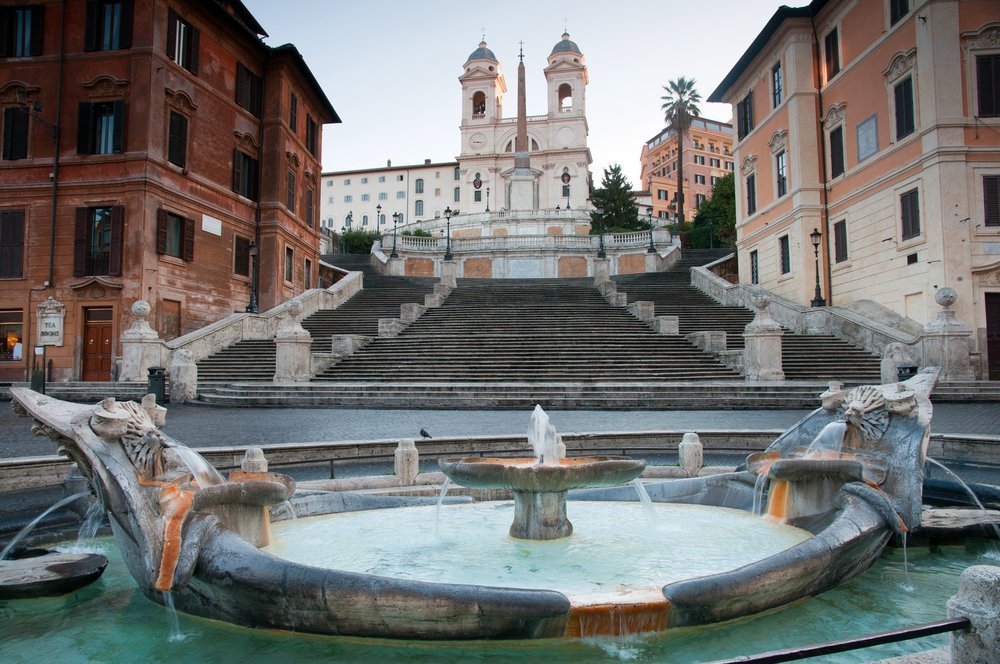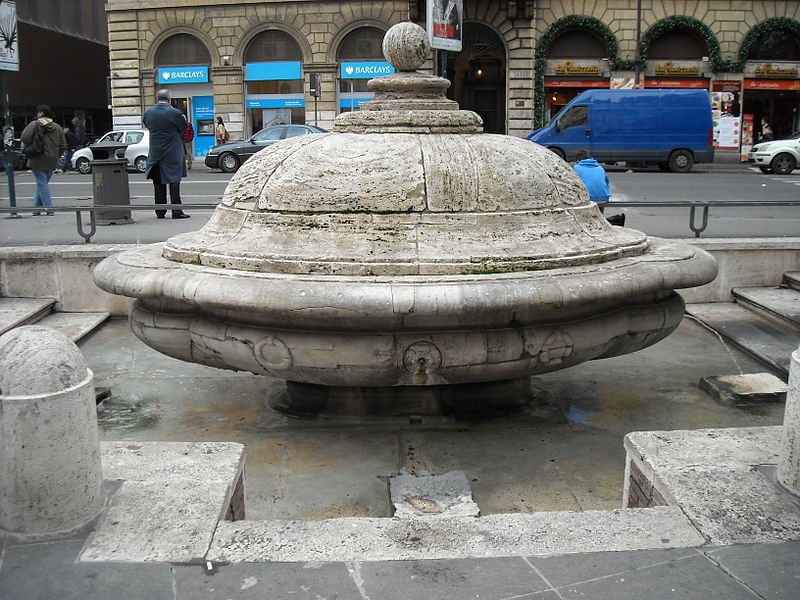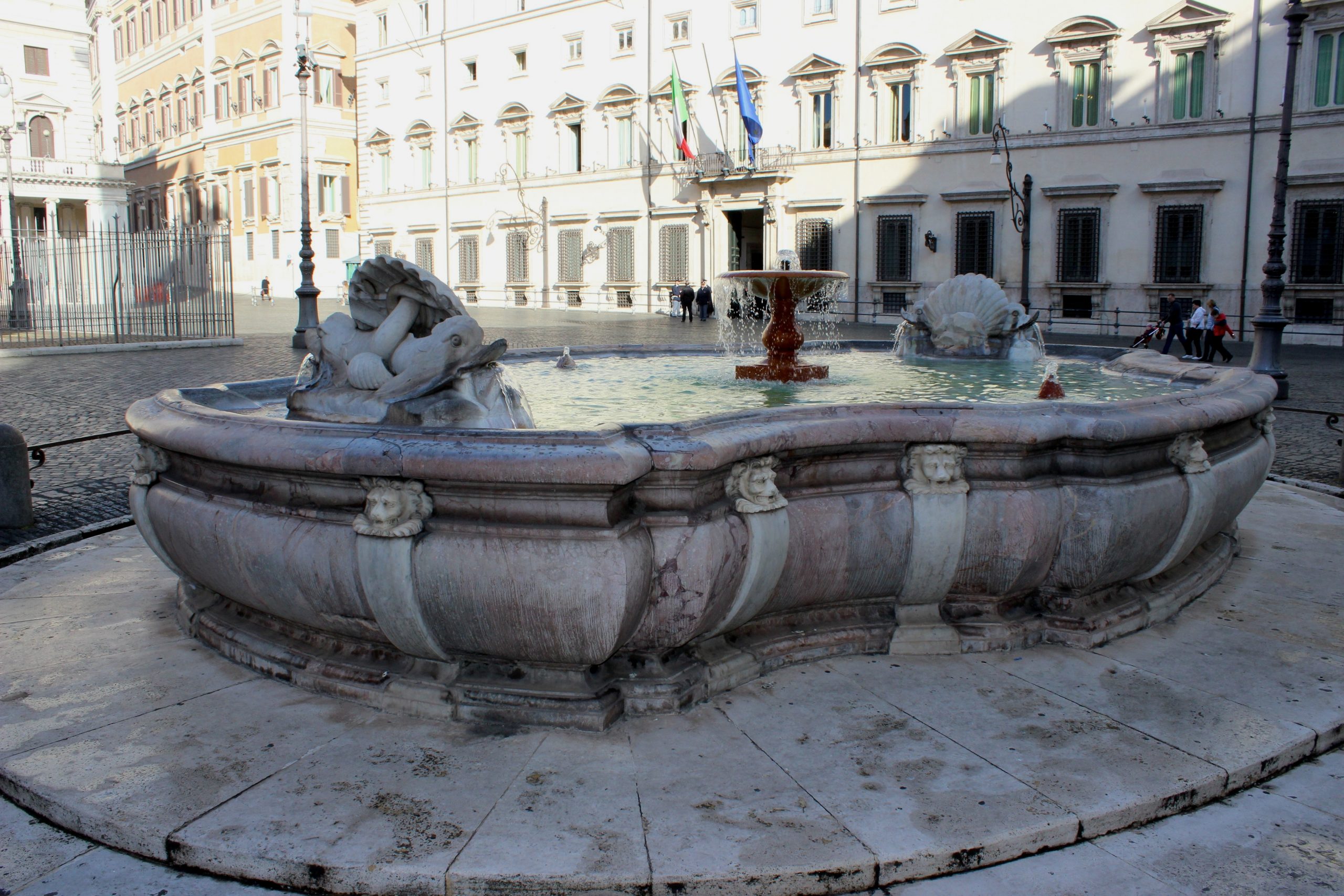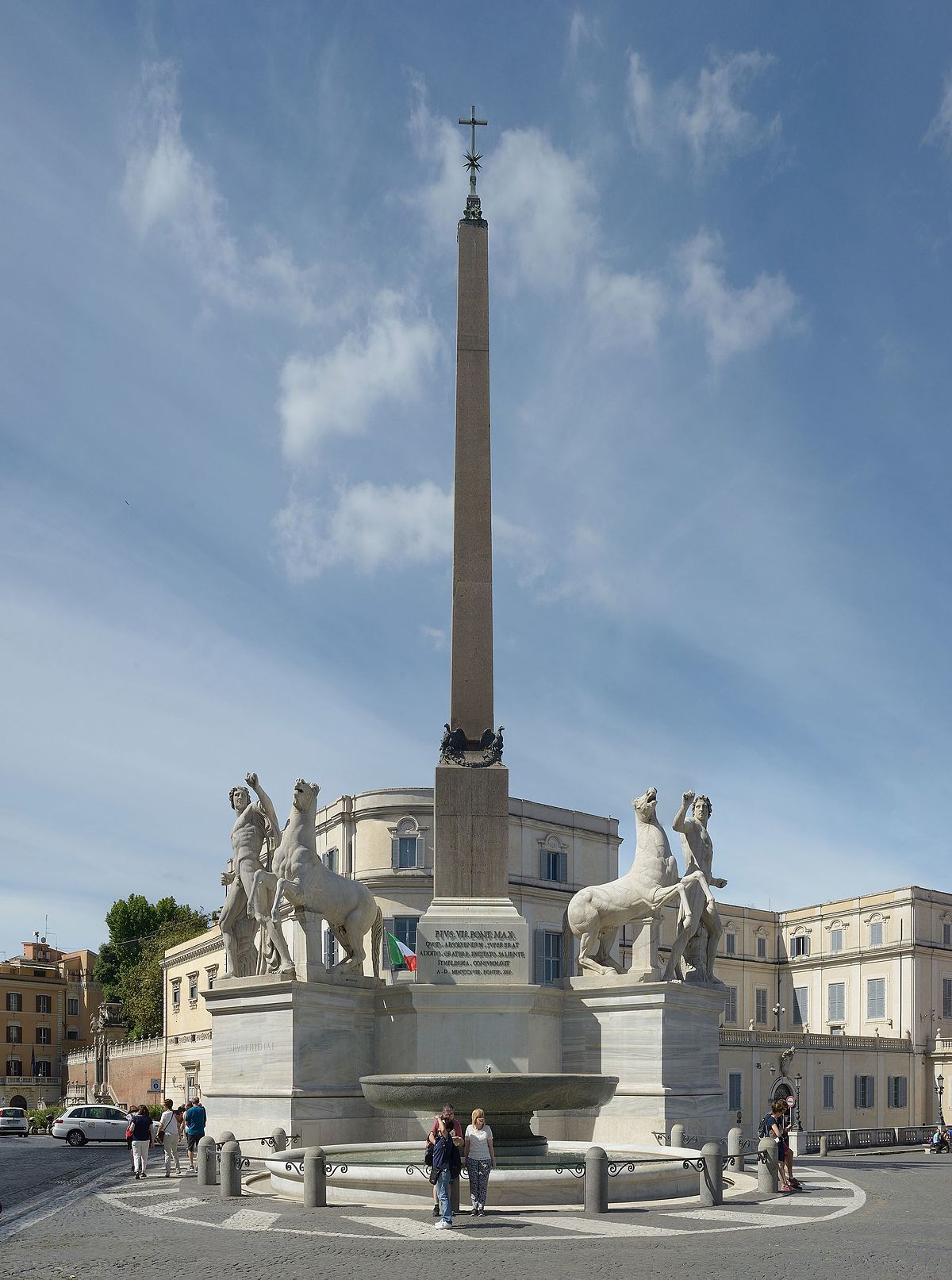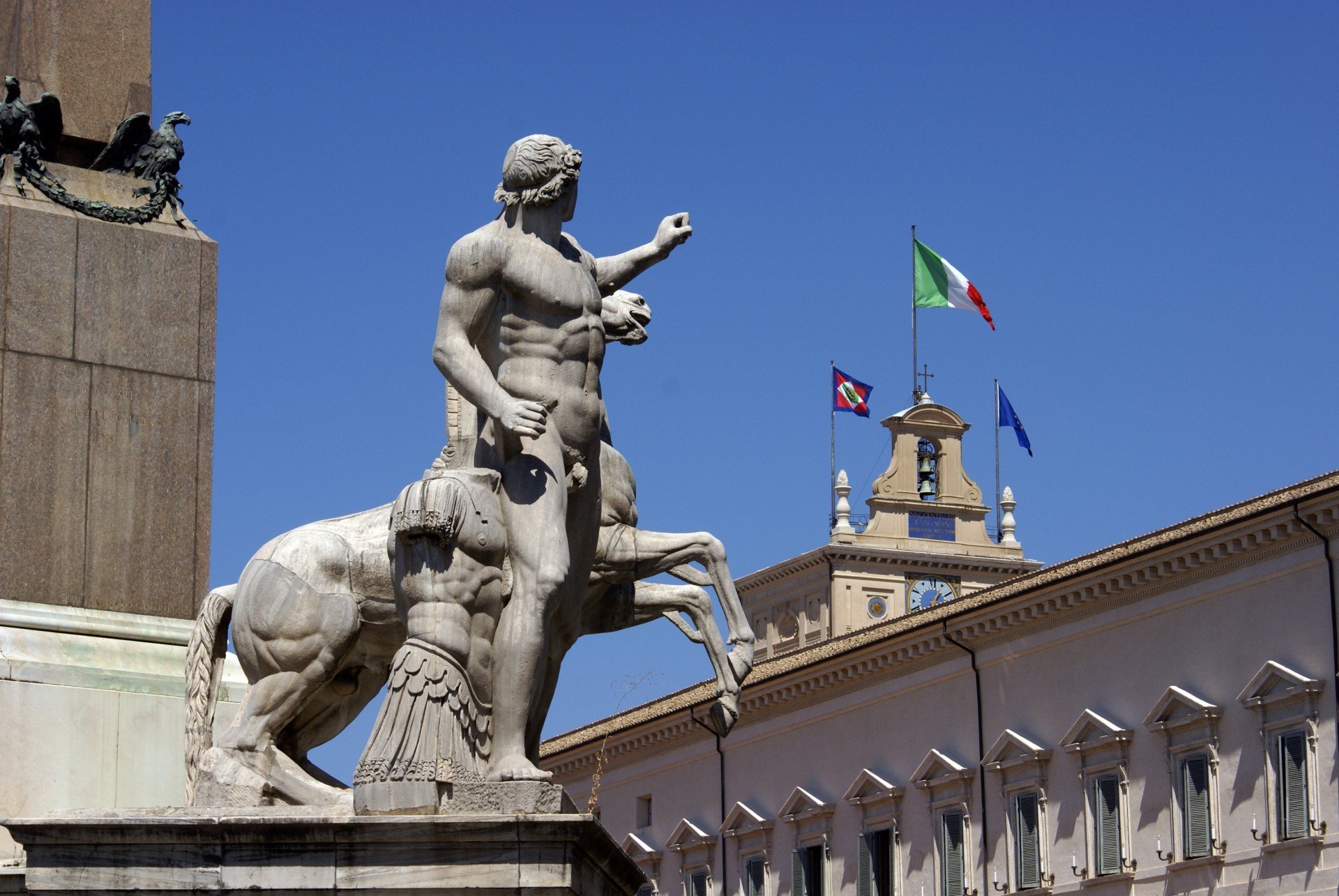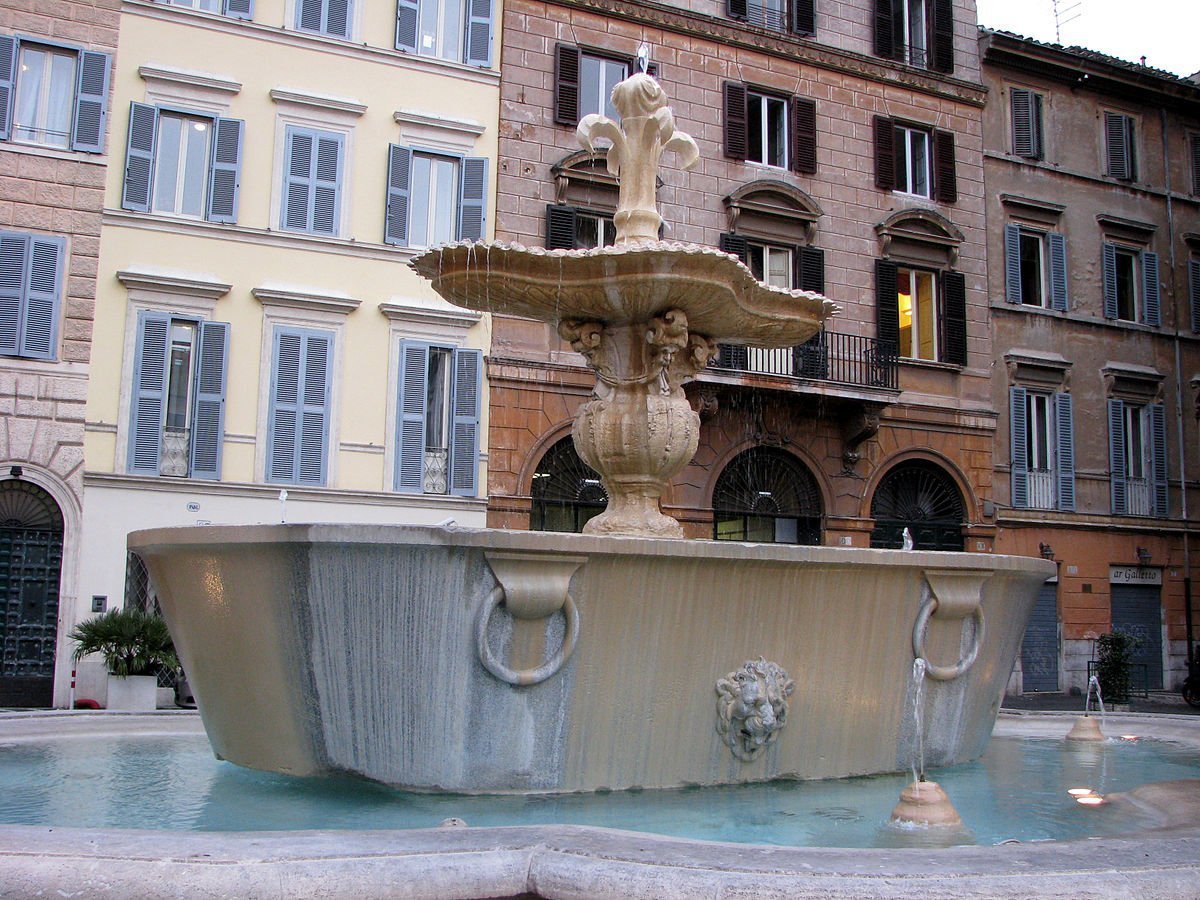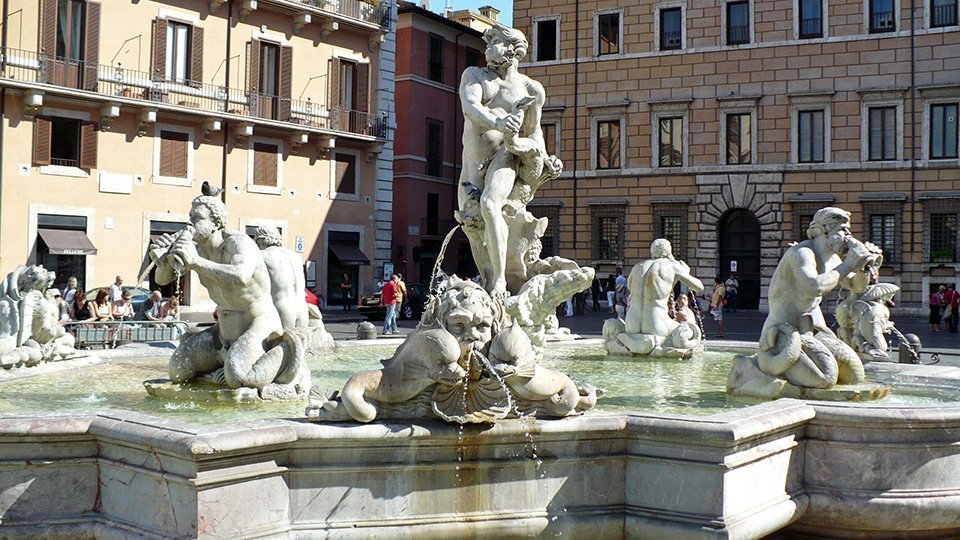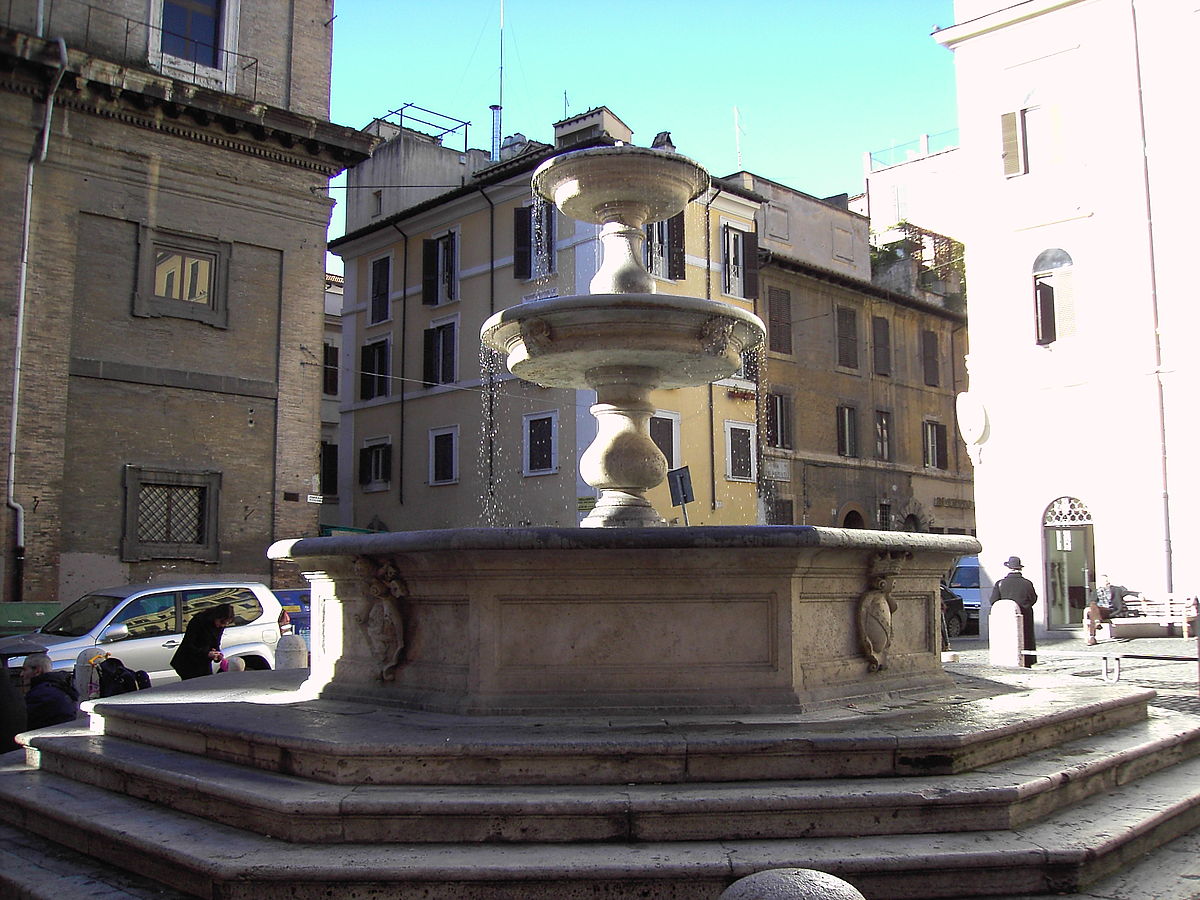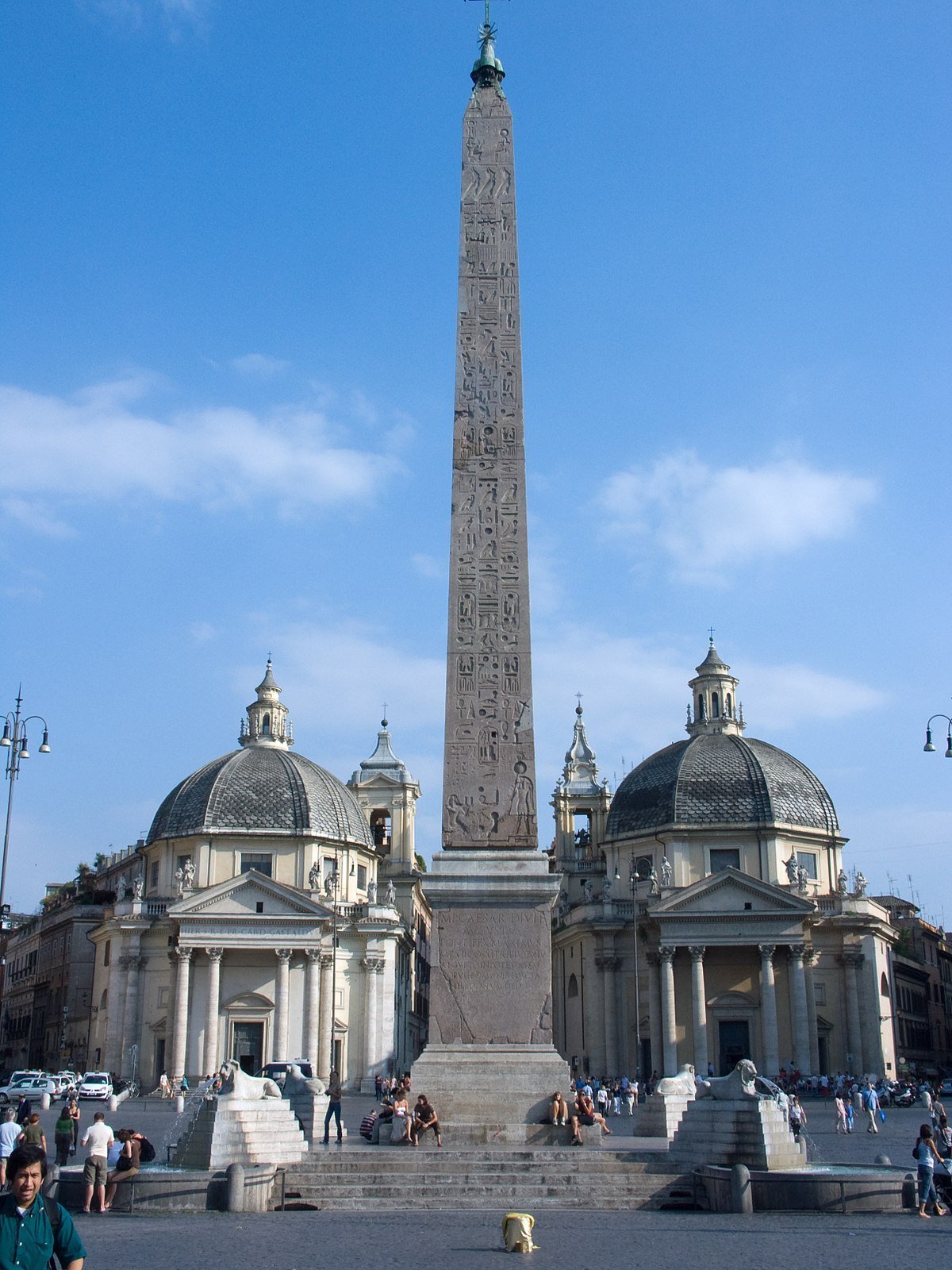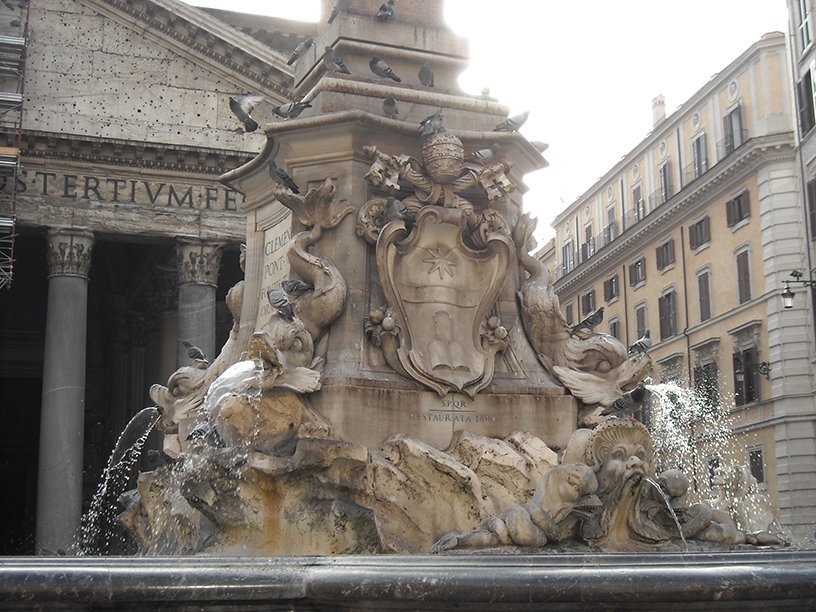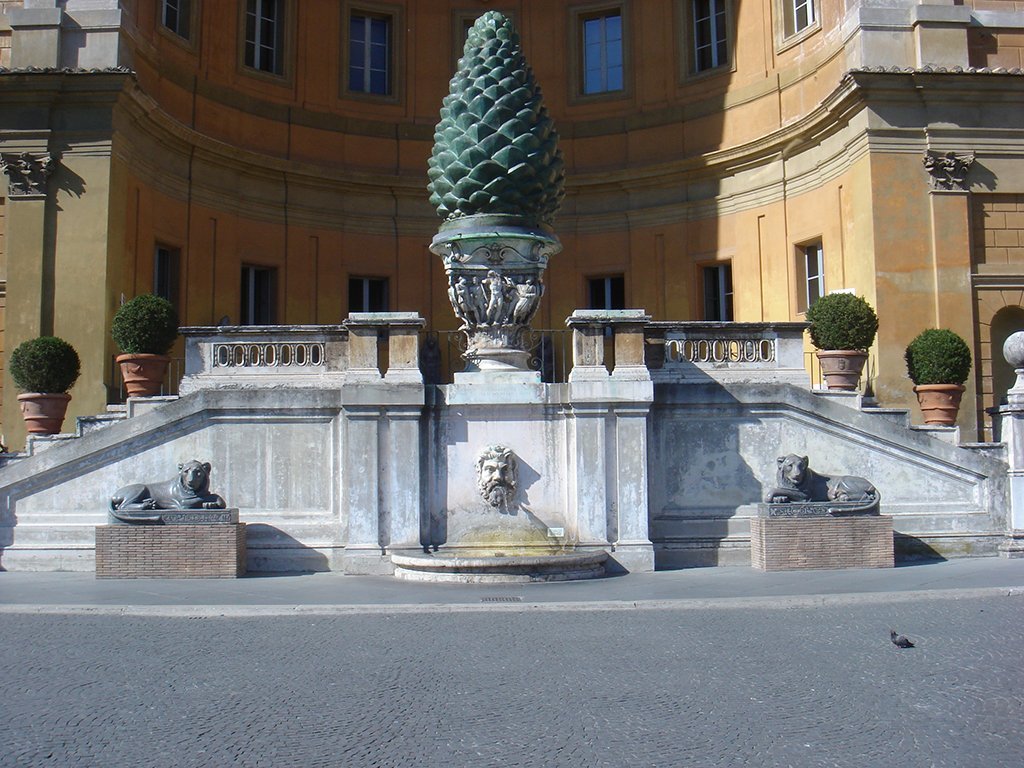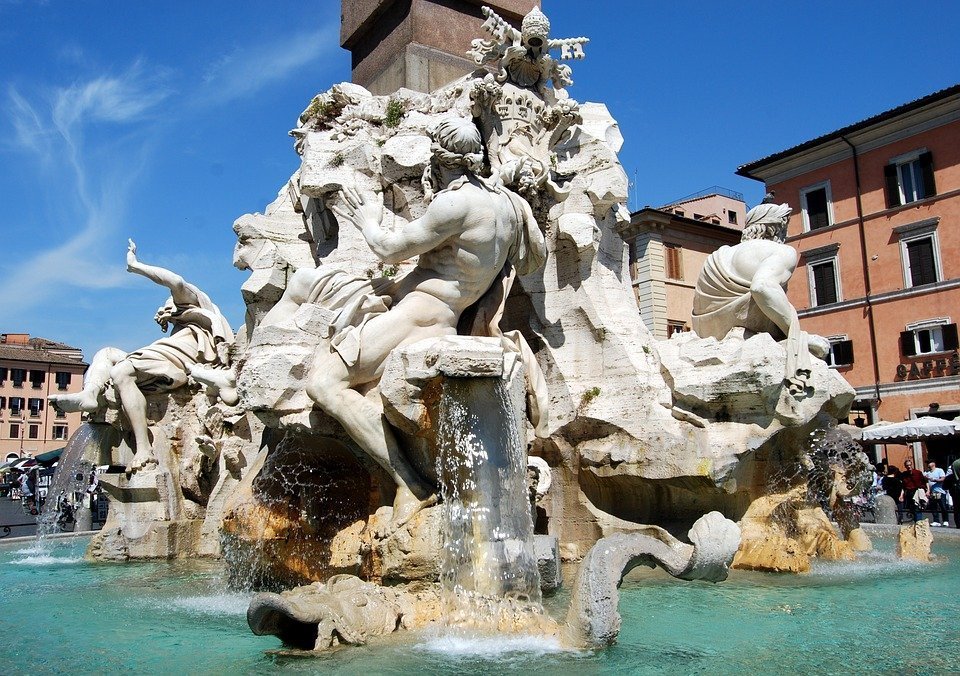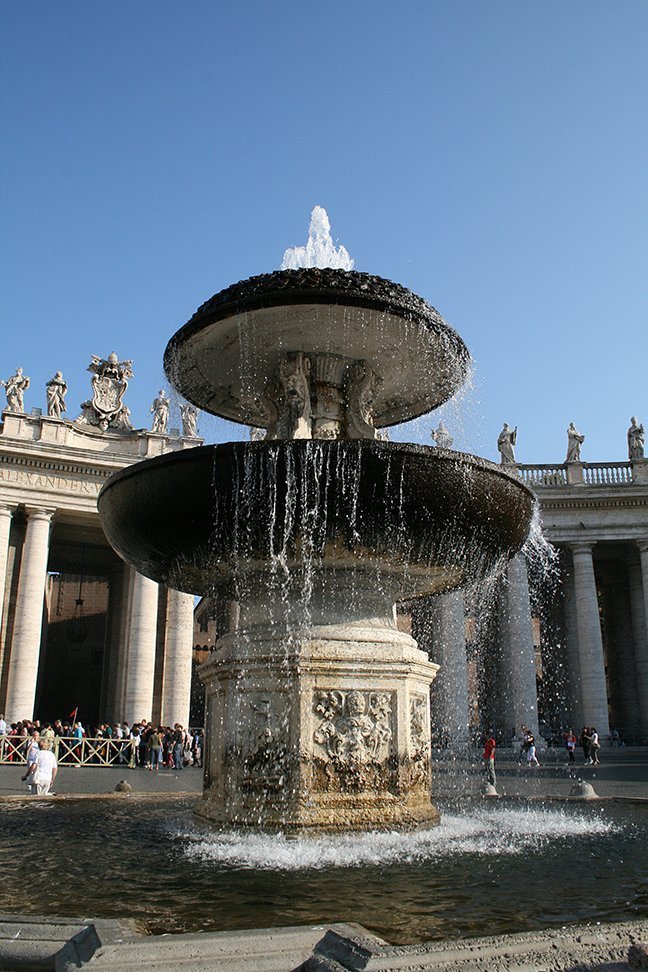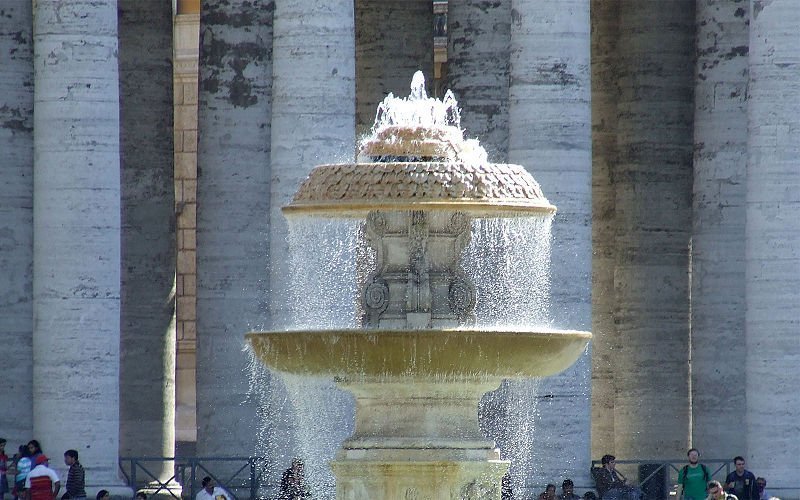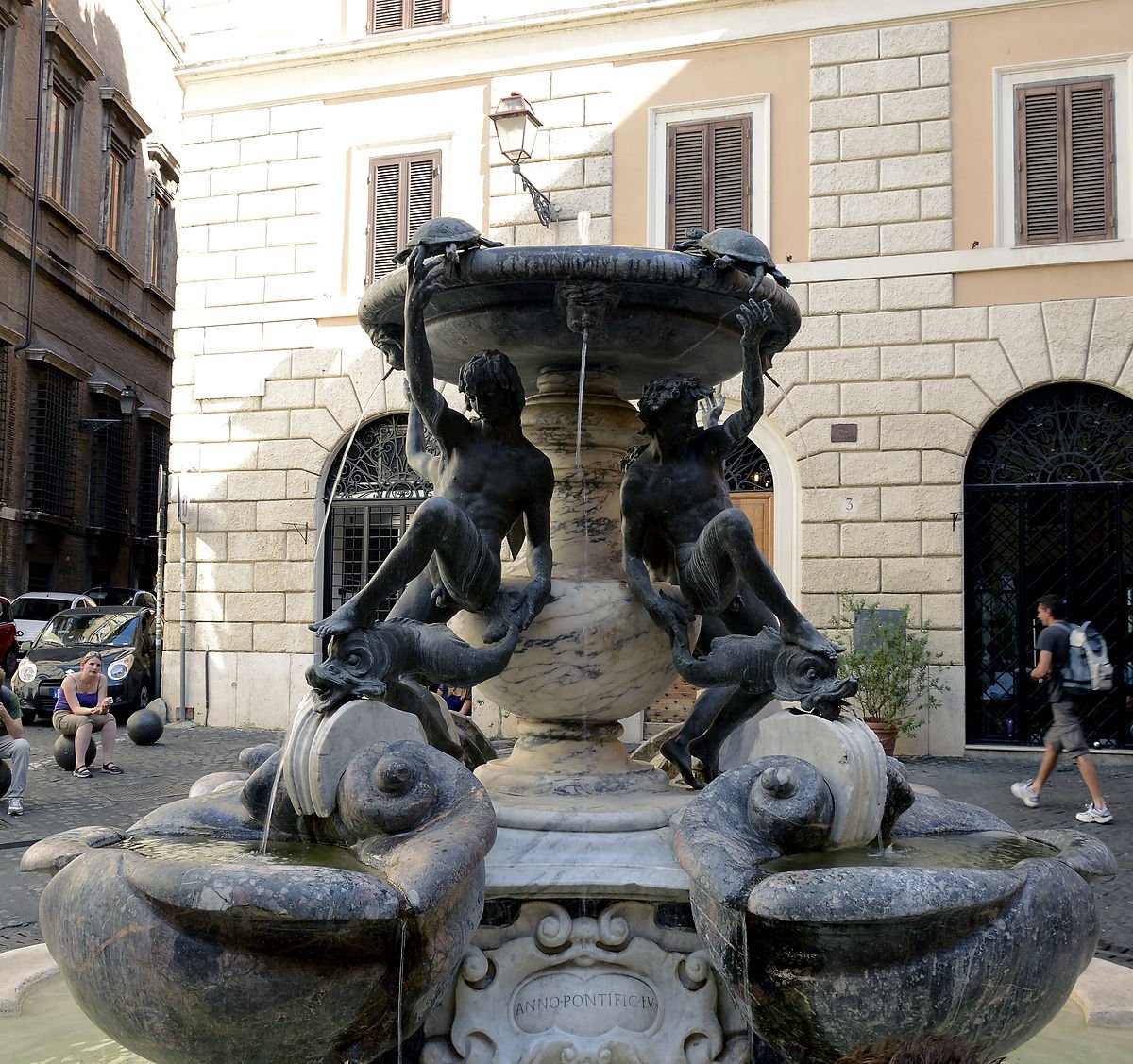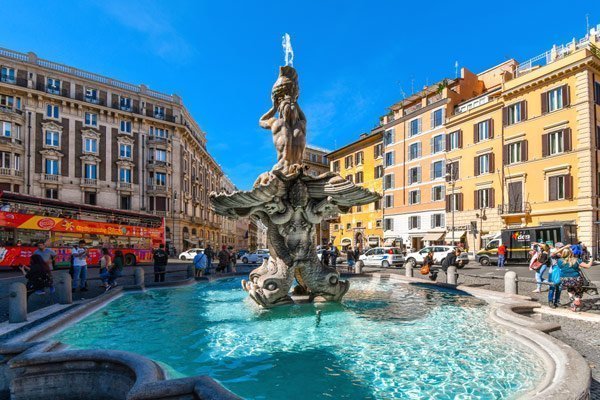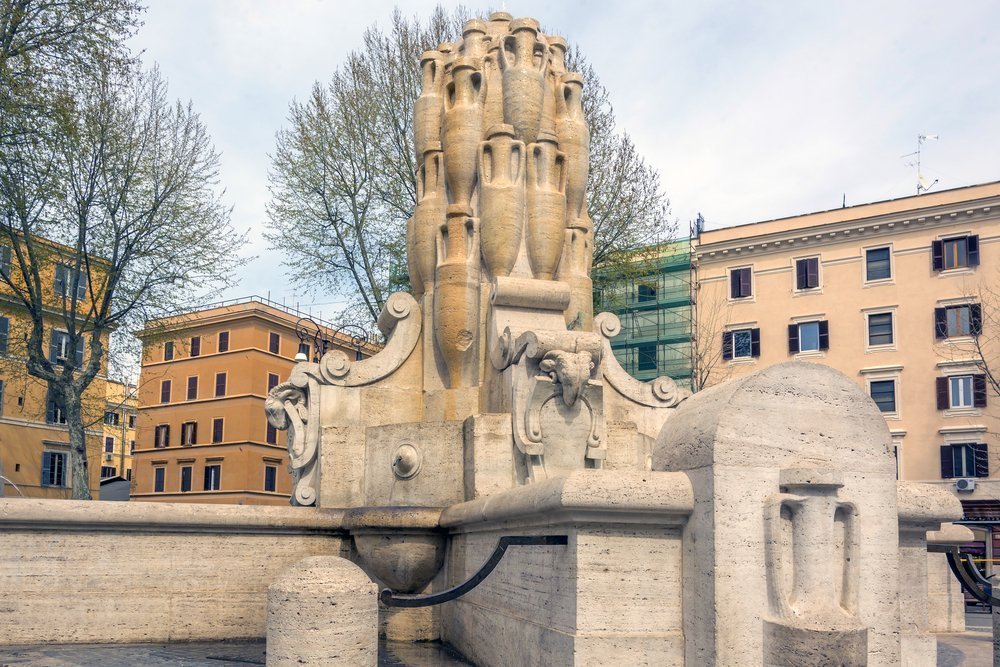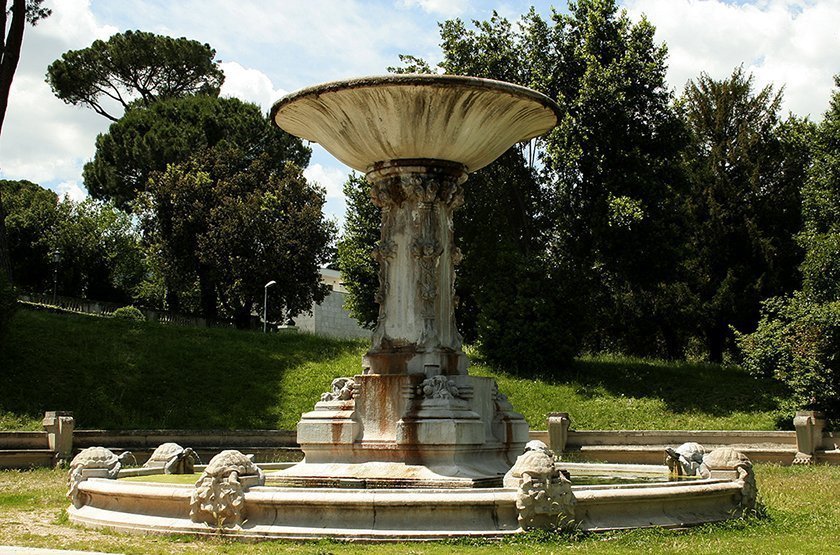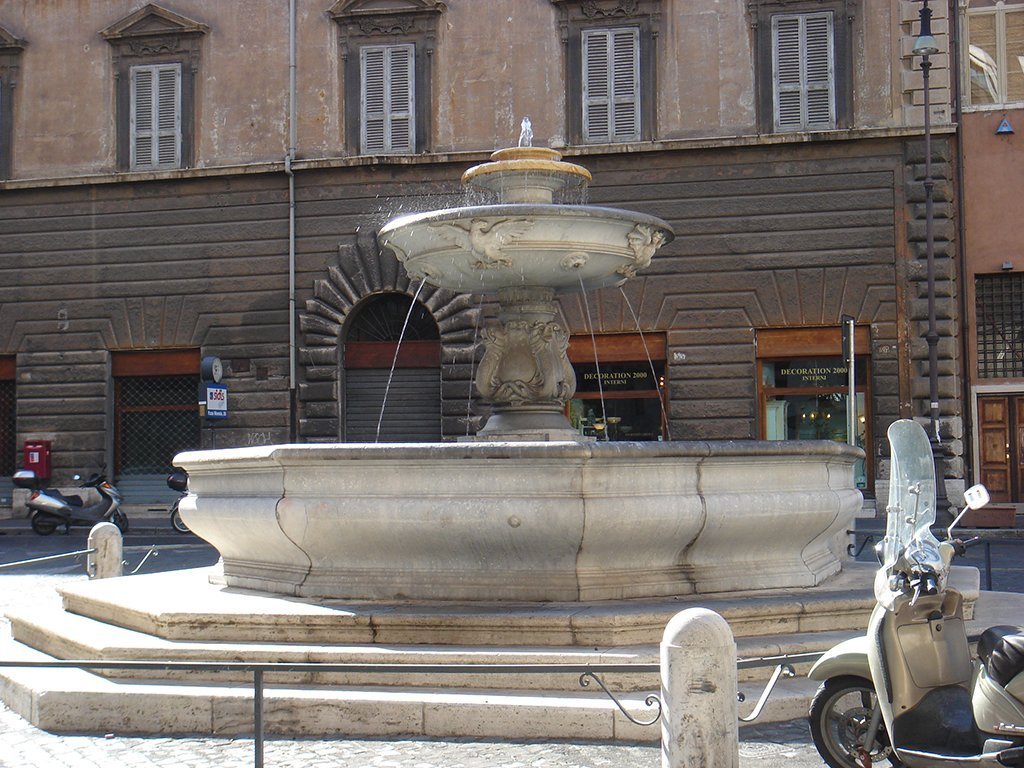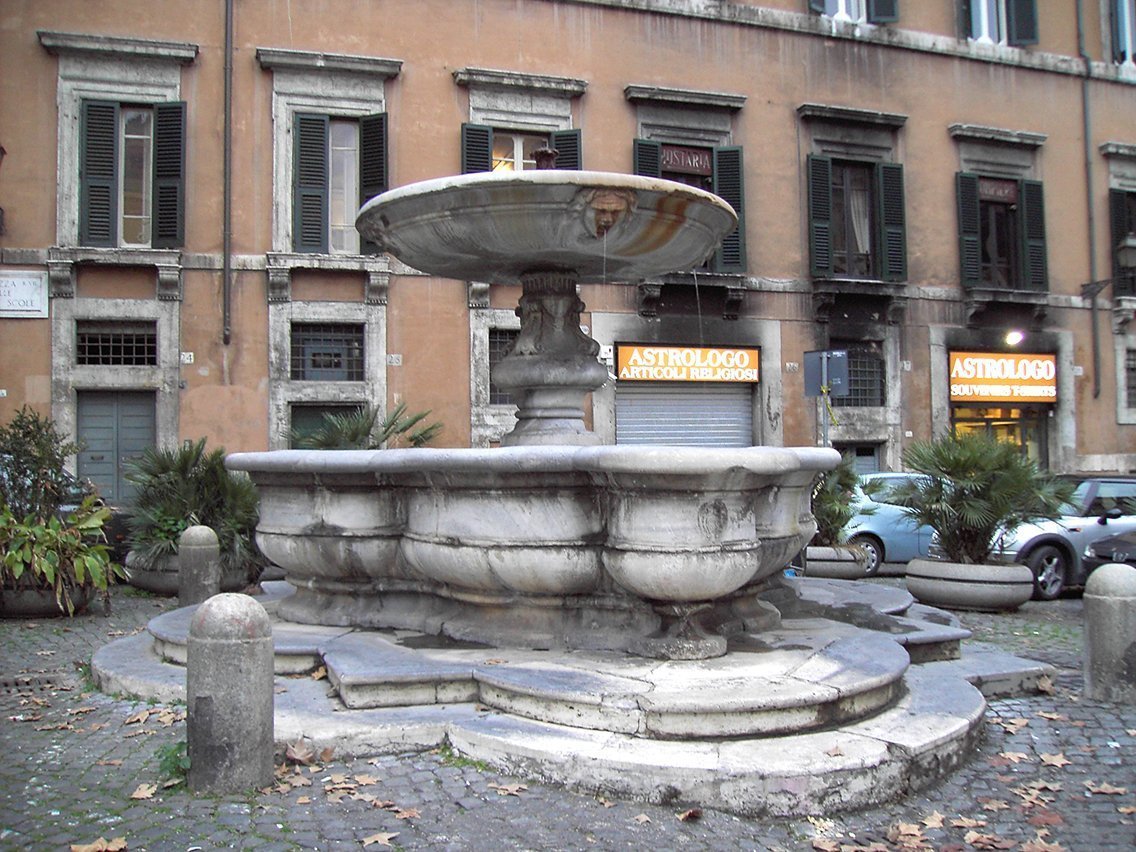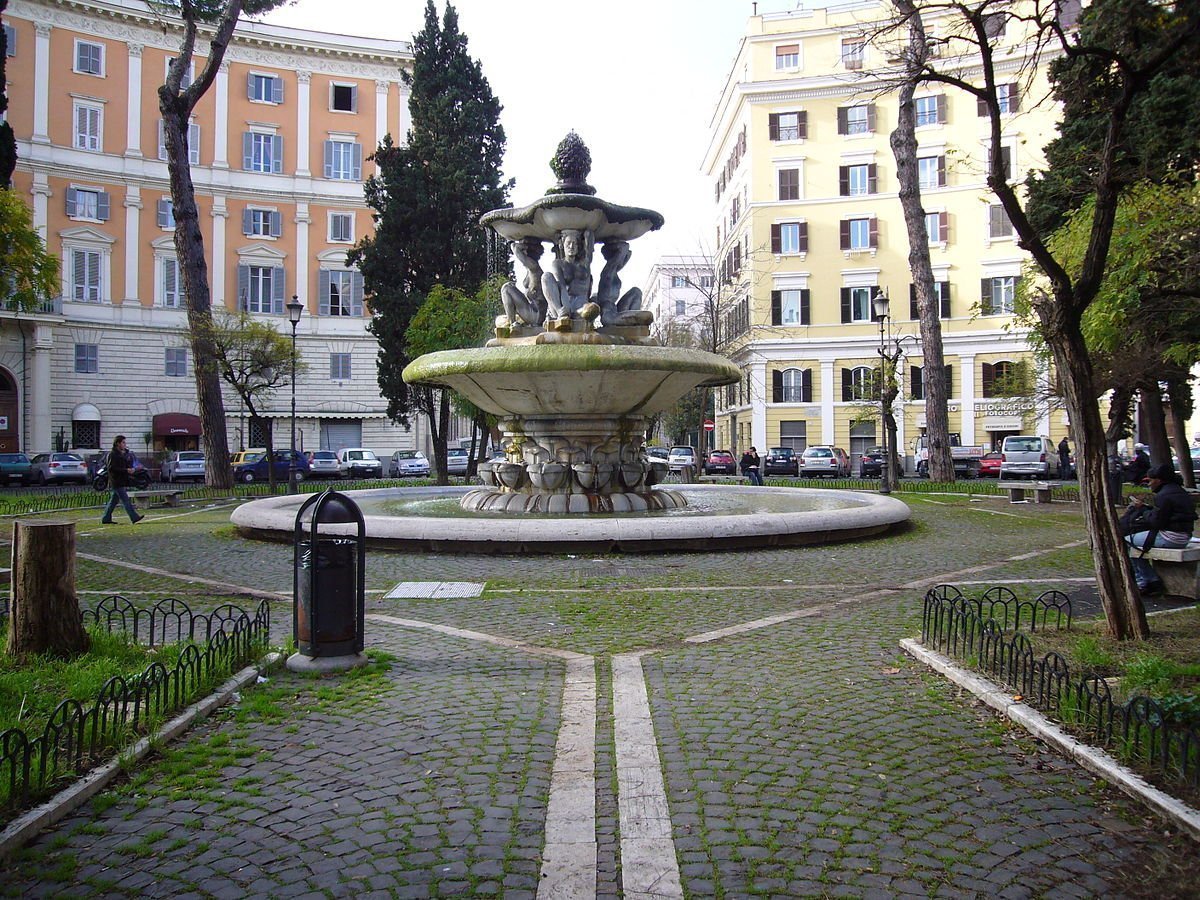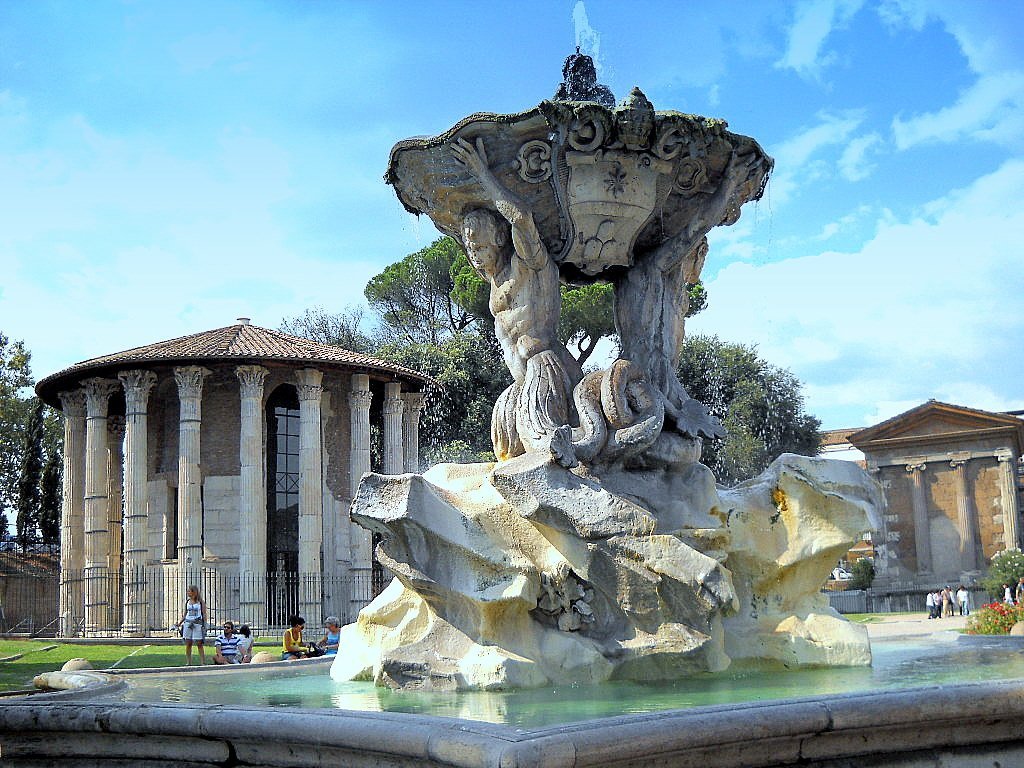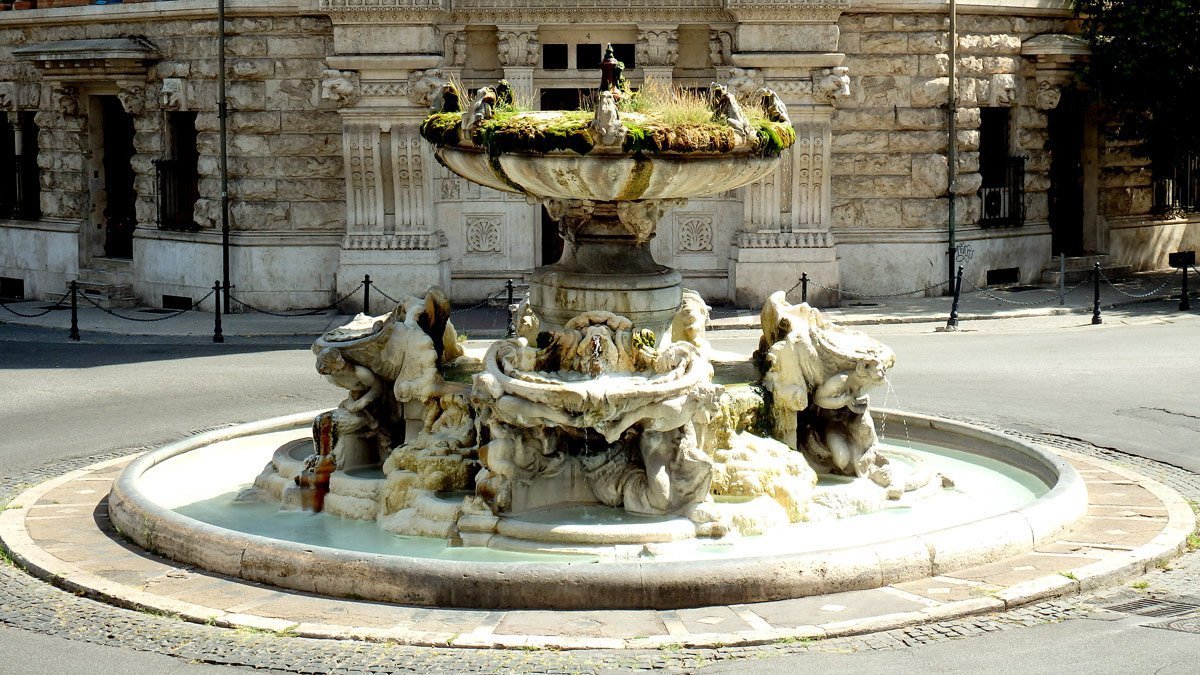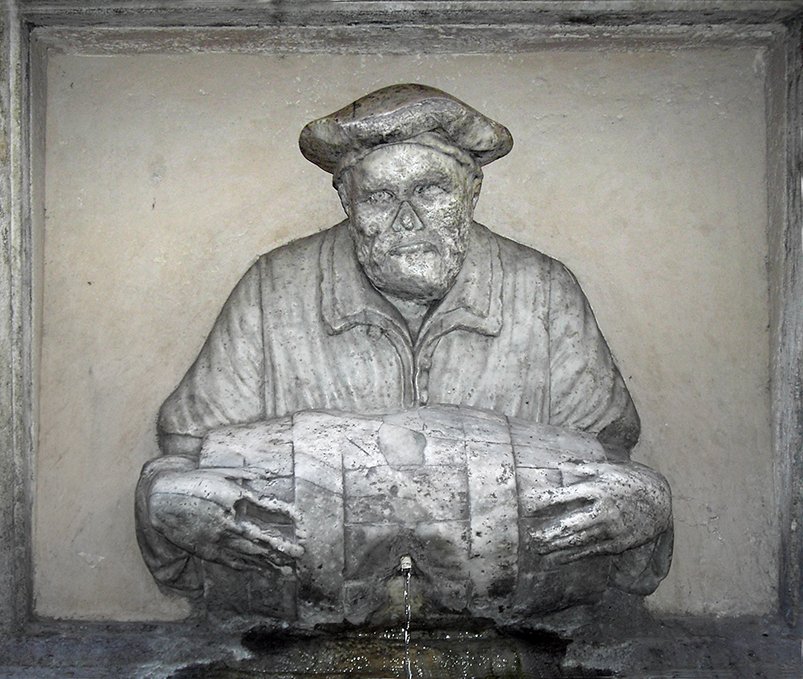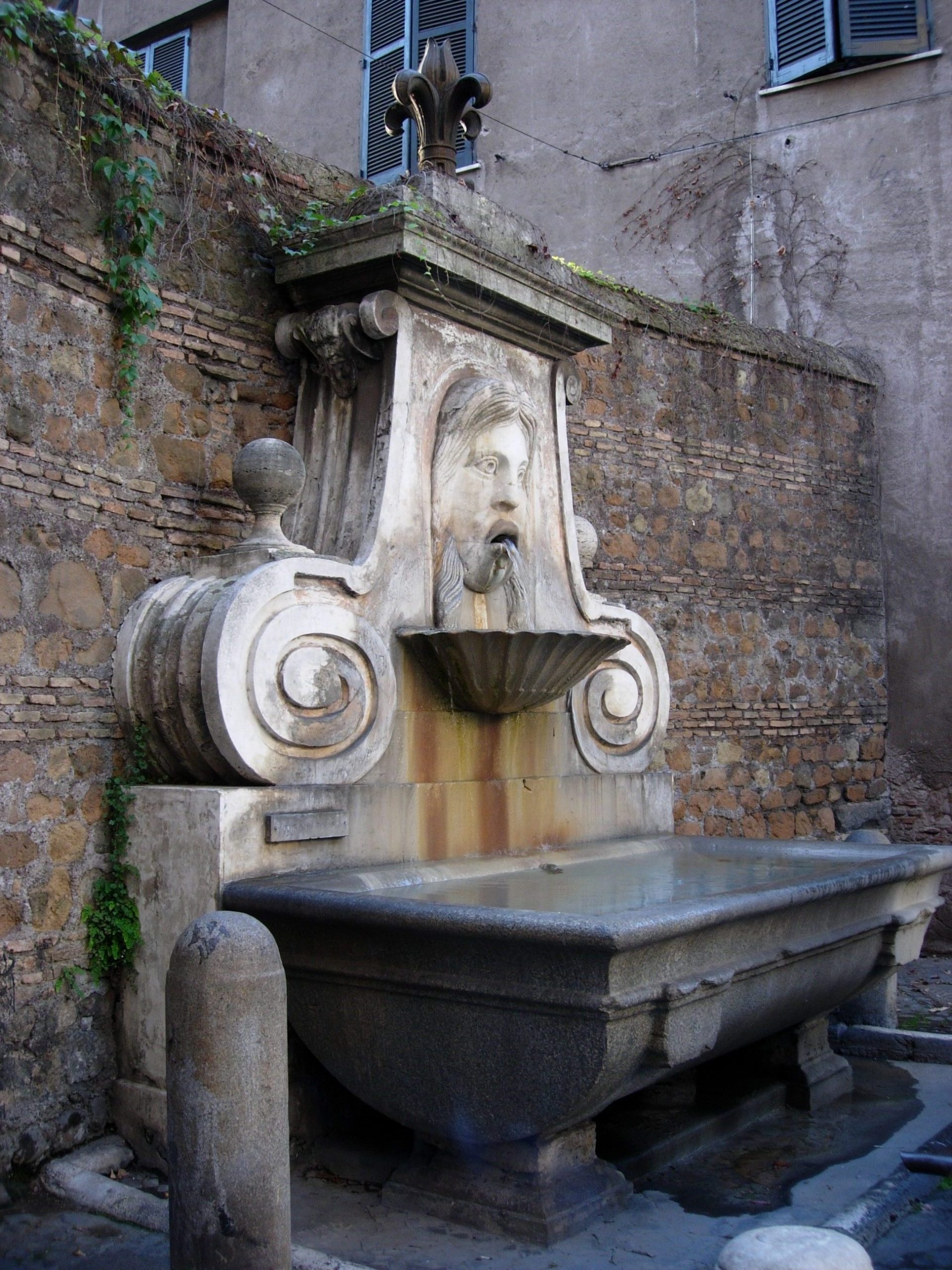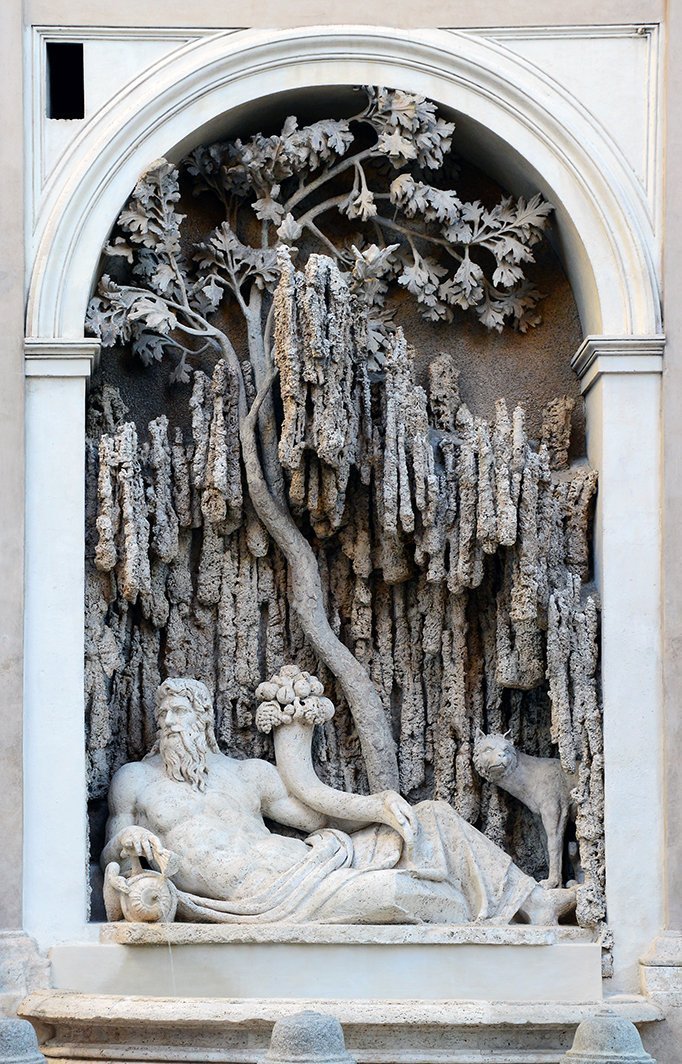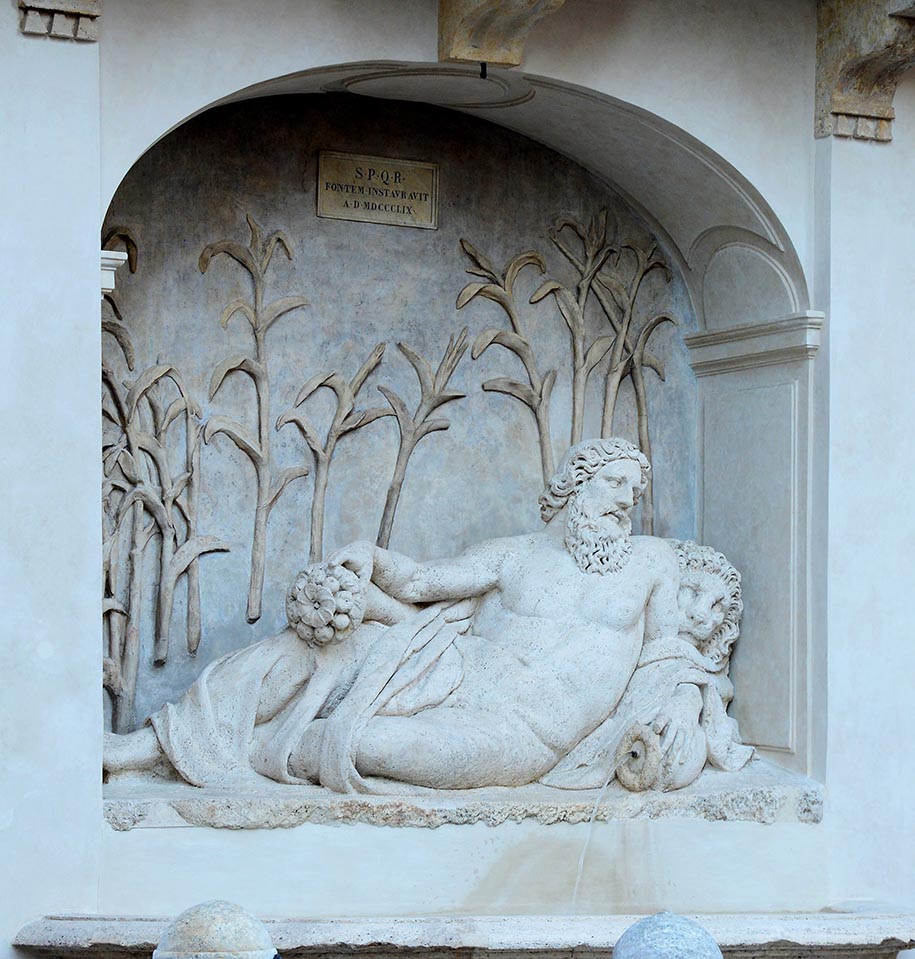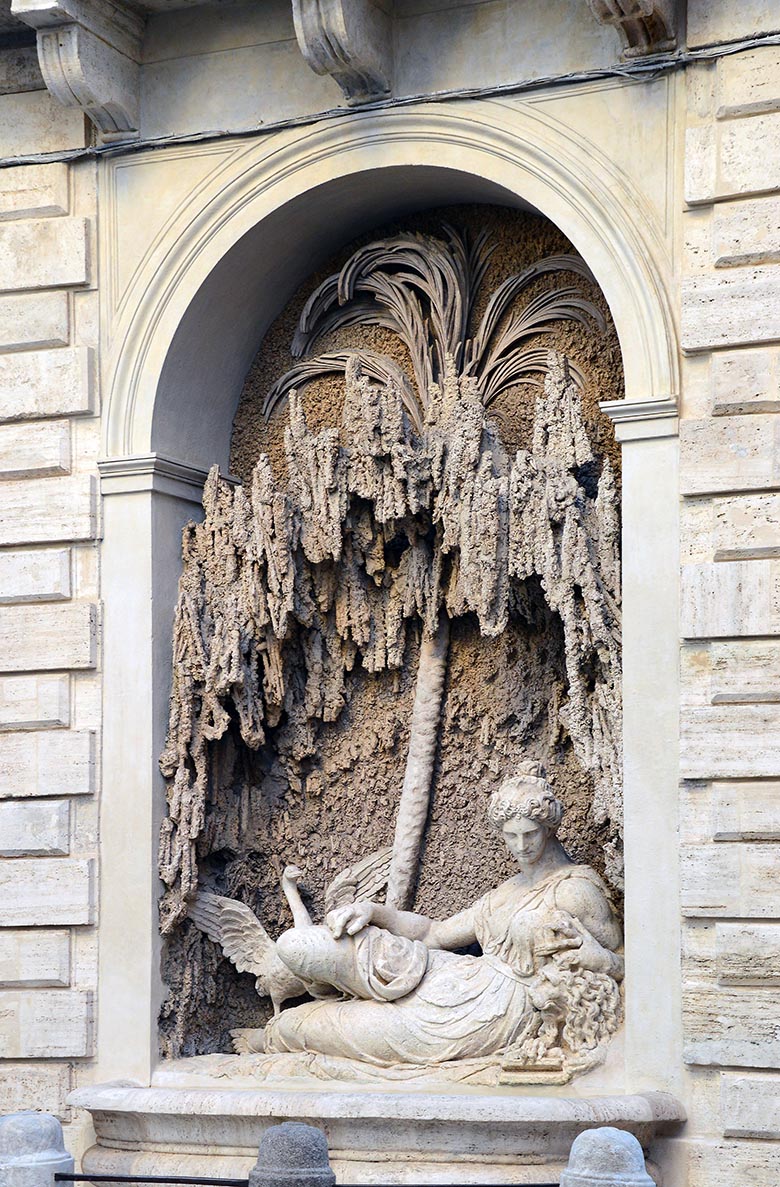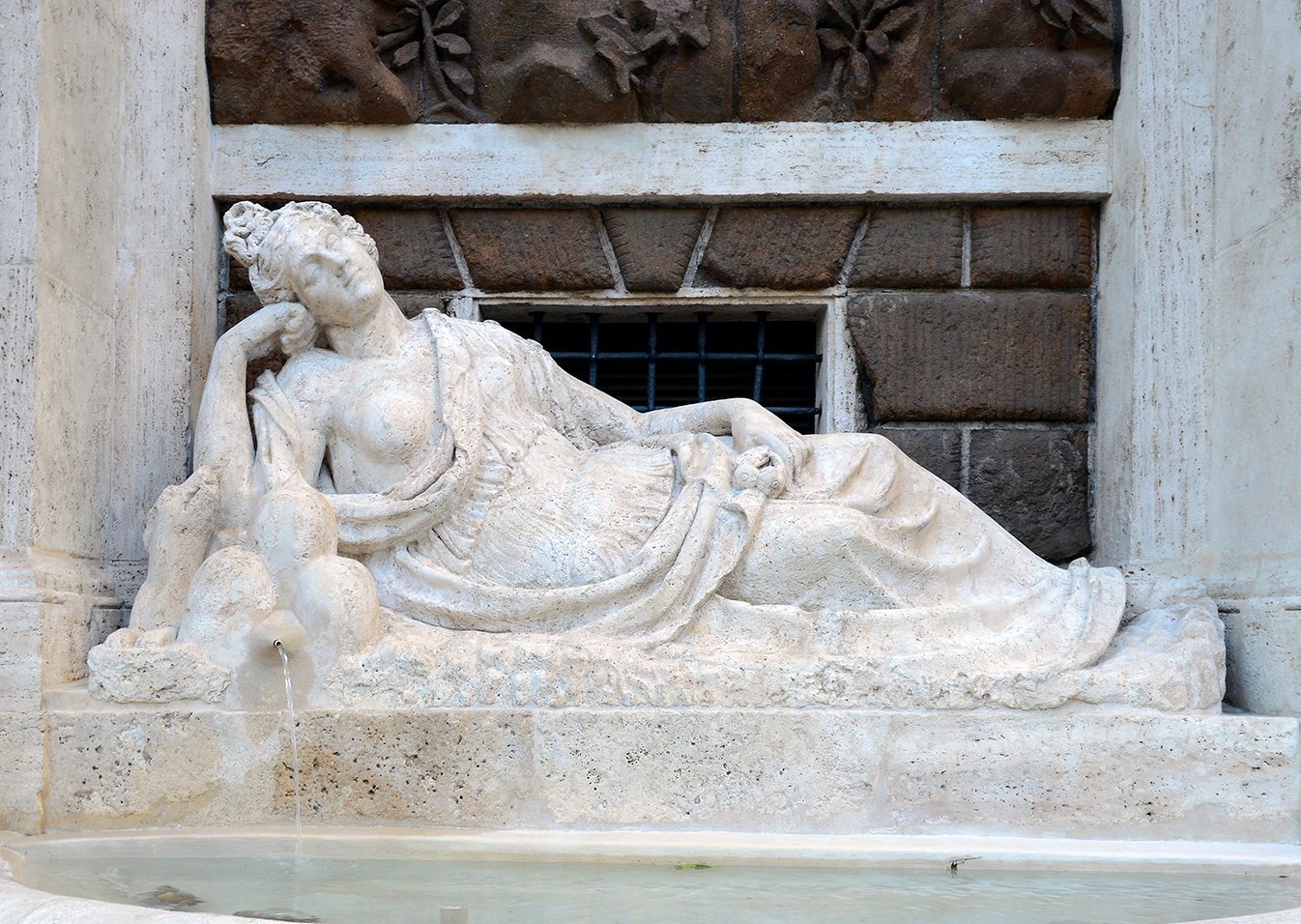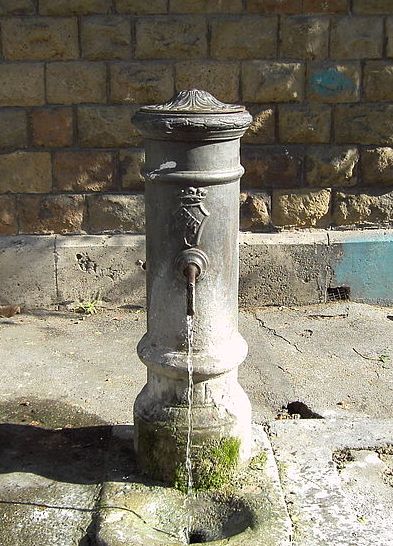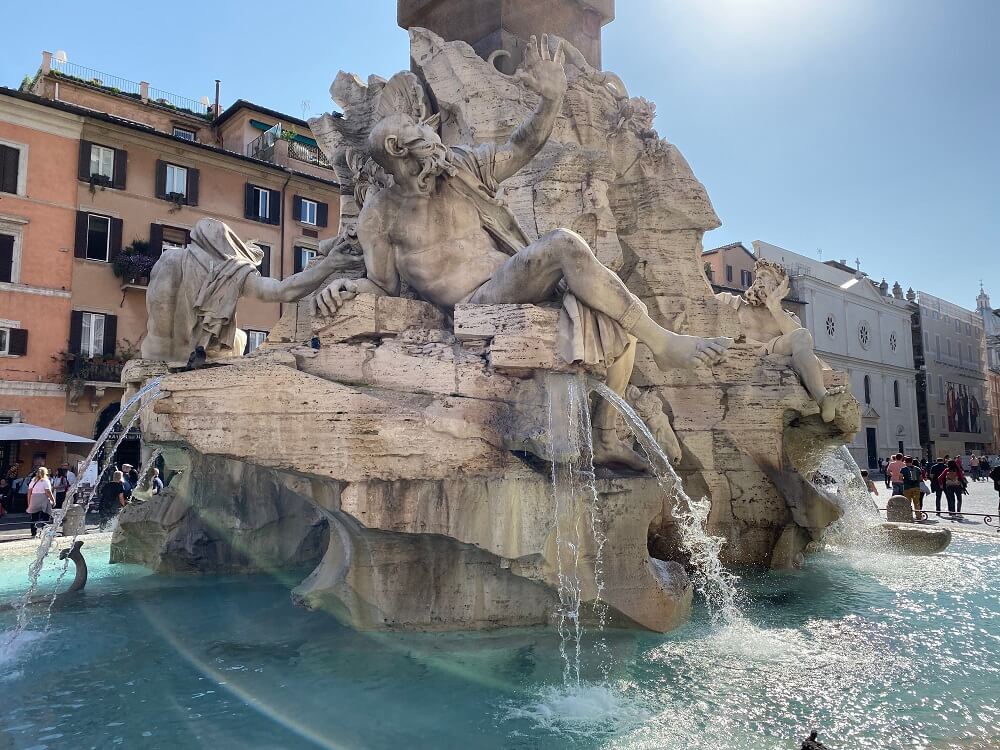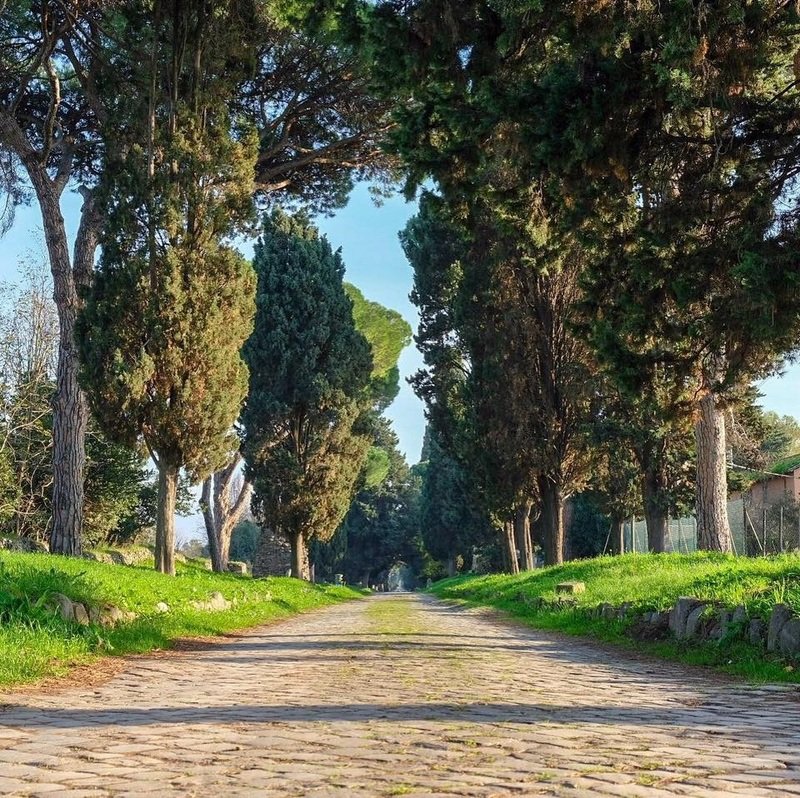When fountains come to mind, most picture extravagant, even wasteful, displays of water. Imagine the fountains in Las Vegas or in front of your rich uncle’s house. While the fountains of Rome are extravagant, most serve–or have served–purposes beyond strict decoration.
Some provided water for the surrounding community, whether it was for drinking, bathing, or washing their belongings. Others signified the terminus of an aqueduct, usually represented by some extravagant display called mostra.
Click below for a deep dive into the not-so-shallow history of these remarkably crafted displays of Roman architecture and design.
Table of Contents
- Trevi Fountain
- Fontana dell’Acqua Felice
- Fontana dell’Acqua Paola
- Fontana del Peschiera
- Fontana delle Naiadi
- Fontana del Nettuno
- Fontana di Piazza Santa Maria in Trastevere
- Fontana delle Api
- Fontana di Piazza d’Aracoeli
- Fontana della Barcaccia
- La Terrina
- Fontana di Piazza Colonna
- Fontana dei Dioscuri
- Fontane di Piazza Farnese
- Fontana del Moro
- Fontana di Piazza della Madonna dei Monti
- Fontana del Nettuno (Piazza Navona)
- Fontane dell’Obelisco
- Fontana del Pantheon
- Fontana della Pigna
- Fontana dei Quattro Fiumi
- Fontane di Piazza San Pietro
- Fontana delle Tartarughe
- Fontana del Tritone
- Fontana delle Anfore
- Fontane di Valle Giulia
- Fontana di Piazza Nicosia
- Fontana del Pianto
- Fontana della Piazza dei Quiriti
- Fontana dei Tritoni
- Fontana delle Rane
- Il Facchino
- Fontana del Mascherone
- Quattro Fontane
- Nasone
Trevi Fountain
We all know the most famous fountain in all of Rome, Trevi Fountain, in one way or another. Whether you’ve seen it on TV (the Lizzie McGuire Movie, for the millennials), in timeless classic films like Roman Holiday, in travel and history books, or even in person, Trevi is one of the great icons of Rome.
Beautifully designed by Nicola Salvi who drew inspiration from Bernini. Though it’s fame is infinite, the mostra we see today is not as old as you might expect. Rome is often imagined as ancient—mostly because it is—but this iconic fountain was completed in 1762 as the terminus for the aqueduct Aqua Vergine.
This was not the original aqueduct, though, rather a secondary conduit that was added during the Renaissance. The original, Aqua Virgo, was constructed in 19 BC by Marcus Vipsanius Agrippa. However, it’s terminus is elsewhere.
More details about this particular fountain can be found on our Trevi Fountain attraction page, if you’d like a deeper dive into one of the most magnificent fountains of Rome.
→ Come see the Trevi Fountain on our Dolce Vita Stroll
Fontana dell’Acqua Felice
In 1585, at the start of Pope Sixtus V’s reign, only one aqueduct was maintained: Aqua Vergine. Anyone who wanted fresh, clean drinking water could only obtain it from a single fountain near today’s Trevi Fountain. That’s obviously way too many people for one fountain to feed, and likely too many commoners flooding the area we now call Rome’s historic center to please the wealthy and righteous. So, the new pope took it upon himself to restore previous aqueducts and create conduits to provide fresh water throughout the city. Thus, the restoration of Acqua Alessandrina was completed, but renamed to Acqua Felice after the pope, named Felice Peretti at birth.
Fontana dell’Acqua Felice is among one of the fountains of Rome that acts as a mostra for the aqueduct Acqua Felice. It was designed by Domenico Fontana between 1585 and 1588. His surname is literally fountain, but it is indeed his family name and not necessarily representative of his work on fountains. Though maybe it was a self-fulfilling prophecy—we’ll never know.
The Fontana dell’Acqua Felice is also named the Fountain of Moses due to the large statue of the biblical figure centered among its porticos, created by Leonardo Sormani and Prospero da Brescia. Though the larger-than-life statue fell under much criticism, the fountain as a whole succeeded in its political scheme: proving the Catholic Church served the needs of the people. See it for yourself in the Quiriniale District.
→ See it for yourself on our My Rome tour
Fontana dell’Acqua Paola
Found on Janiculum Hill, the Fontana dell’Acqua Paola is a monumental beast, though not as extravagant as Trevi. At least not in the same stylistic sense. It is the mostra for the Acqua Paola aqueduct. The original aqueduct was built by the emperor Trajan, called Acqua Traiana (could’ve guessed that one, right?). It was restored in 1612 under Pope Paul V and renamed after him.
The fountain was designed by Flaminio Ponzio and Giovanni Fontana in 1612. If the name sounds familiar, it’s because his brother created the previous Fontana dell’Acqua Felice whose popularity was the inspiration for Fontana dell’Acqua Paola. However, the major difference between the two aesthetically is in theme. While Domenico used biblical themes, Giovanni simply used water. Five flowing streams with an overflowing basin quenched the locals’ thirst. Its design was even influential for the creation of the Trevi Fountain.
Speaking of Trevi, one of Bernini’s original designs for the iconic fountain was never carried out. Instead it was used to inspire the transition from five ponds to one large pond for Fontana dell’Acqua Paola in 1690. Sounds like a design trade: one inspiring the other, inspiring the other.
Fontana dell’Acqua Paola was the first major fountain on the right bank of the River Tiber. It’s also called the Fontanone del Gianicolo, which translates to “big fountain on the Janiculum Hill”.
→ Explore the Janiculum Hill on our Secret Rome tour
Fontana del Peschiera
Fontana del Peschiera is the newest of the mostre, which is obvious at first glance. It’s much more modern and simpler in design, and honestly doesn’t seem very Roman. There are neither statues nor references to biblical or mythological figures. Just a fairly flat series of pools with vertical spouts.
Its non-descript aesthetic is in no way symbolic of the powerful aqueduct its water comes from, the Peschiera-Capore Aqueduct. It’s considered one of the largest and most complex water systems in the world. Maybe this mostra deserved a little more oomph. You can find it in Piazza degli Eroi.
Fontana delle Naiadi
Centered in the roundabout of Piazza della Repubblica, the Fontana delle Naiadi is a true masterpiece. It is the mostra of Acqua Pia Antica Marcia, reconstructed in 1868 under Pope Pius IX. The original display was roughly 80 meters closer to Termini, the nearby transit hub, and consisted of five vertical water jets spouting from a simple pool. In comparison to the previously mentioned fountains of Rome, its original form is reminiscent of the Fontana del Peschiera due to its simplicity.
Years later, in 1888, the municipality decided to move the fountain to its current position. This opportunity allowed for a complete redesign of the simple fountain. Architect Alessandro Guerrieri created a more elaborate series of pools ranging in height, which is the only remaining aspect of his project. The fountain’s reconstruction was taken over by the sculptor Mario Rutelli, who added the four naked nymphs we see today. Each represent a different body of water: lakes, rivers, underground water, and oceans.
The addition of the nymphs fell under much controversy, mostly from those of the papal faith. They were seen as indecent and immoral spectacles, and greatly disturbed those who held their faith close. However, the municipality disagreed and further embraced their progressive statements by removing a fence guarding the fountain (which outraged the opposed, I’m sure).
Later, in 1912, Rutelli added the central statue of Glaucus, symbolizing human domination over nature. In Roman mythology, Glaucus was a human fisherman who became a sea god. This final addition signified the completion of the Fontana delle Naiadi, which was inaugurated in 1914.
→ See this fountain for yourself on our My Rome tour
Fontana del Nettuno (Piazza del Popolo)
This monumental fountain of Neptune in bustling area of Piazza del Popolo was finished in 1823 by Giovanni Ceccarini. Ceccarini actually developed all of the fountains in the square, but this one is the most significant as it serves as a mostra for the Acqua Vergine Nuovo.
Neptune is centered atop the wall, gripping his trident. Surrounding him are Tritons wrestling with various sea creatures (fish? It’s hard to tell). The fountain itself juts out of the west wall of the piazza, with a shell-like bowl directly under Neptune and a wide semi-circular basin at the ground.
→ Visit this fountain on our Monuments Talk tour
Fontana di Piazza Santa Maria in Trastevere
If you can believe it, the Fontana in Piazza Santa Maria in Trastevere is possibly the oldest of the fountains of Rome. It’s in the square in front of the Basilica di Santa Maria in Trastevere and dates all the way back to the 8thcentury. So, I’d say it’s pretty old.
Of course, the fountain we see is not entirely original—it’s undergone a few facelifts over the years. The present fountain is the work of Donato Bramante with additions by Bernini and Carlo Fontana (unrelated to the brothers who created two of the mostre mentioned previously). Donato is most famous for his work on St. Peter’s Basilica, so you can imagine the expectation of quality during this commission in 1499.
The fountain underwent a second restoration in 1604 by Girolamo Rainaldi and again 55 years later by Bernini who replaced the base, moved the fountain to the center of the square, and added seashells to the basin. Even the water source changed during that time, from Acqua Felice to Acqua Paola. At the end of the century, Carlo Fontana decided Bernini’s seashell weren’t good enough, so he replaced them with his own. I’m not sure, but it sounds like a petty move.
Its near-final surgery was a big one: a complete reconstruction in 1873. The previous design remained intact, but different (i.e. cheaper) materials were used for the “upgrade”. The pool was rebuilt again in 1930, and luckily for it, it hasn’t been changed since.
→ Discover this fountain on our Trastevere and Villa Farnesina tour
Fontana delle Api
Located in Piazza Barberini, it was sculpted by the great Gian Lorenzo Bernini in 1644. His resumé includes wonders such as the baldachin in St. Peter’s Basilica and the colonnade in St. Peter’s Square. It’s an interesting find to see such a small nugget of design from an artist of such great magnitude.
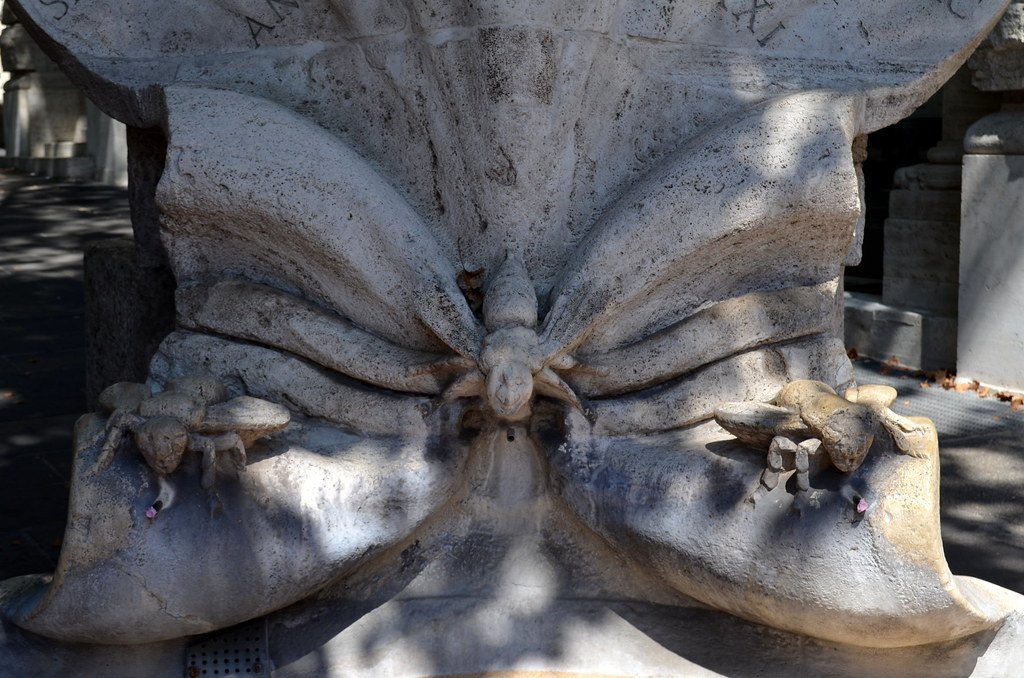
Roma – Fontana delle Api – Gian Lorenzo Bernini (1644)
Design-wise, the fountain is an open shell with three bees resting on it. It was originally designed as a watering trough for horses, but of course that has changed over time. The inscription on its open shell reads: “Urban VIII Pont. Max., having built a fountain for the public ornamentation of the City, also built this little fountain to be of service to private citizens. In the year 1644, XXI of his pontificate.”
→ Discover more on our Bernini and Borromini tour
Fontana di Piazza d’Aracoeli
A simple Renaissance fountain, it is also one of the first of its period. Though simple it may be, it’s not without its ornaments. The top heralds a symbol of the papal family, while putti, or chubby male children, stand underneath pouring water from urns. It was designed by Giacomo della Porta in 1589.
Though designed by della Porta, the actual construction was carried out by three others: Andrea Brasca, Pietro Gucci (maybe an ancestor of the fashion house?), and Pace Naldini. Its original figure was basically an oval shape decorated with mascarons on varying tiers which were meant to ward off evil spirits, though they may ward of humans too due to their creepiness.
It was altered a century later to include the coat of arms of the Chigi family, to which the then-current pope, Pope Alexander VII, belonged. Then in the 18thcentury, a big pool at the base was added for water collection. This is the form we see today, mascarons and all. You can find it at the base of Capitoline Hill.
Fontana dell’Acqua Acetosa
This fountain was once a somber spectacle for the iron-rich waters that flowed through its spouts. In fact, the water was so appreciated by Pope Paul V, he commissioned Giovanni Vasanzio to erect this fountain in 1619. It was restored by Innocent X in the mid-17thcentury, and then by Pope Alexander VII just afterward.
A papal crest and tombstone are housed at the top of the fountain. It’s a bit disturbing mixing burial with a fountain for drinking water, but rest assured there are no bodies here. A staircase leads down into the fountain where three nooks are found, each housing the coat of arms of the Chigi family. Three plaques for the three popes. A fourth pope, Clemente XI, took a hand at restoring it in 1712, as well. He also had a plaque imbued above the center-most nook. You can find it in the neighborhood of Parioli.
Fontana della Barcaccia
Found at the bottom of the Spanish Steps, the Fontana della Barcaccia is one of the more whimsical fountains of Rome. It was completed in 1627 by Pietro Bernini, father of the acclaimed Gian Lorenzo Bernini. Structurally, it is a boat resting below ground level that overflows with water to give the illusion that it’s sinking. It’s also decorated with the coat of arms of the Barberini family, to which its commissioner, Pope Urban VIII, belongs.
The translation of this is “Fountain of the Ugly Boat” because its ugly (beauty is in the eye of the beholder), and the lore this fountain is based on. According to local legend, when the Tiber flooded in 1598 the water carried a boat into Piazza del Popolo.
Read more about it and its location on our Spanish Steps attraction page.
→ See it for yourself on our Rome by Night tour
La Terrina
This little fountain is found in Piazza della Chiesa Nuova in Parione and means “the soupbowl”. It was moved from the center of Campo de ‘Fiori in 1899, but it didn’t leave empty-handed. It was designed and built in 1590 by Giacomo della Porta under the commission of Pope Gregory XIII.
It was designed with a large, oval pool, originally positioned below street level due to the low water pressure, with an oval basin and four dolphins spouting water from the inner-most basin. However, because of its location in the busy street market of Campo de ‘Fiori, which is still active today, locals used the fountain as a trash can.
Those beautiful dolphins were covered in garbage, and the fresh flowing water was tarnished. As a result, the dolphins were removed and a lid was placed atop the outermost basin in 1622. Water still flows out of its center through piercings the stone roses located on the tank’s sides.
The sculptor of the lid is unknown, but he left an inscription that translates to “Love God and do not fail. Do good and let them talk.” This refers to the gossip culture of Campo de ‘Fiori.
→ See it with us on our My Rome tour
Fontana di Piazza Colonna
Another of the fountains of Rome designed by Giacomo della Porta, it was physically built by Rocco Rossi in 1577. Fun fact: this is actually one of 16 fountains by della Porta, all following the renovation of Acqua Vergine. Sounds like he had an obsession (or well-paid commissions).
The base of the fountain is made of a unique pink marble from the island of Chios in Greece, which is the same marble della Porta used for the doorframe of St. Peter’s Basilica. Sixteen lion heads circle the basin with a smaller stone bowl on a pedestal in the center where the water flows out of. That bowl was replaced later by the current white one by Alessandro Stocchi, who also added dolphins on either side of the basin. Romans certainly love their dolphins.
Fontana dei Dioscuri
Unfortunately, the original fountain no longer exists. This doppelganger set was commissioned by Pope Pius VII and designed by Raffaele Stern in 1818, who used ancient Roman granite atop a large basin. Simple, elegant, so where’s the flare? Ah, it must be the towering obelisk between them. Head over to Piazza del Quirinale to see it for yourself.
→ Climb the Quirinal on our Bernini and Borromini tour
Fontane di Piazza Farnese
Another set of twin fountains has decorated Piazza Farnese since the 16thcentury. The basins are thought to have come from the Baths of Caracalla. No wonder they look like giant bathtubs.
Fontana del Moro
Found in the southern end of Piazza Navona, its beauty is trumped by the towering obelisk and fountain in the piazza’s center. A Moor stands in a conch shell wrestling a dolphin (seriously, Romans love dolphins) surrounded by four Tritons. A Moor is a Muslim inhabitant of specific areas, mostly in the middle east but also Sicily and Malta during the Middle Ages. It was mostly designed by Giacomo della Porta in 1575, but Bernini has his hand in adding the Moor later on in 1653.
It’s a beautifully crafted piece of work. So beautiful, in fact, that the original statues were moved to Galleria Borghese and replaced with copies.
→ Explore Piazza Navona and more on our La Dolce Vita Stroll
Fontana di Piazza della Madonna dei Monti
Monti is one of the most beautiful neighborhoods in Rome, similar to Trastevere in trendiness and cuisine. While you’re there exploring, you’ll most likely pass by one of the many fountains of Rome: the Fontana di Piazza della Madonna dei Monti. This triple-decker display of water from Acqua Felice for Monti was designed by none other than Giacomo della Porta and built by Battista Rusconi in 1588.
Made of travertine, the fountain is adorned with four coats of arms: two of the pontiff and two of the Commune.
Fontana del Nettuno (Piazza Navona)
The Fontana del Nettuno in Piazza Navona is one of three fountains of Rome found the square, this one located on the northern end. Again, its stunning artistry is only trumped by the towering obelisk and fountain in the center of the square.
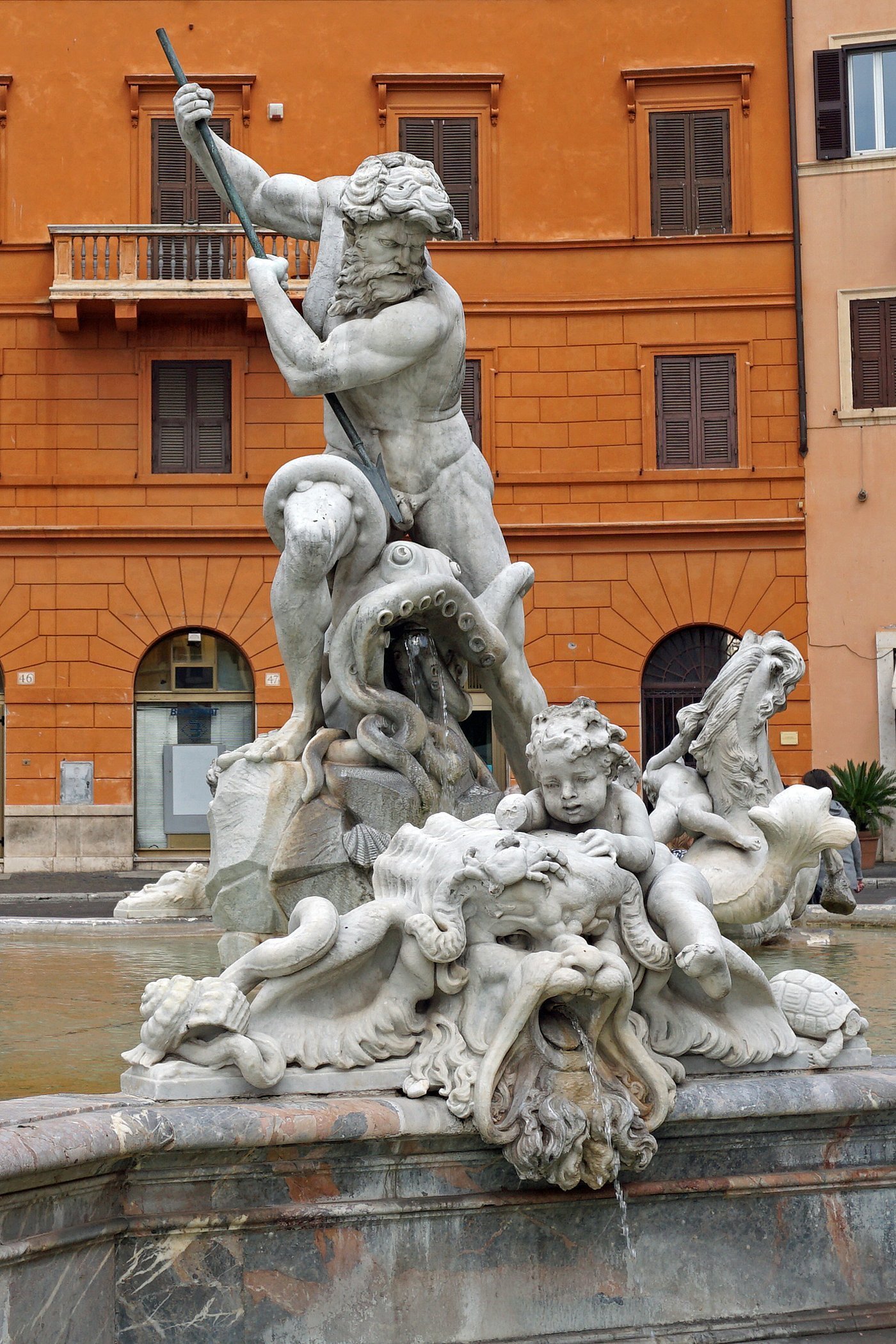
Fontana del Nettuno, Piazza Navona, Rome.
Its basin was designed by Giacomo della Porta (seriously, he should have changed his surname to Fontana) in 1574. The statues were an addition 300 years later, so originally the fountain was just a simple basin. The fountain we see today was completed in 1878 by Antonio della Bitta and Gregorio Zappalà who added the statues of Neptune fighting an octopus (finally something other than a dolphin) and the other various statues surrounding it.
→ Explore Piazza Navona’s fountains and others on our Monuments Talk
Fontane dell’Obelisco
Giovanni Ceccarini designed this group of four mini fountains in Piazza del Popolo in 1822-1823. They are essentially identical: a lion perched atop a stepped plinth. They surround the obelisk centered in the piazza. He saved the drama for the mostra at the west wall, leaving these simple and complementary.
→ Discover this fountain on our Monuments Talk
Fontana del Pantheon
Ah the Pantheon, what a glorious culmination of design: the ancient Pantheon, the renaisssance fountain, and the ancient Egyptian obelisk. Though the name is “Fountain of the Pantheon”, it’s actually in the square in front of the Pantheon, called Piazza della Rotonda.
Can you guess who made this one? Giacomo della Porta. Just like every. Single. Other. Fountain.
It was finished in 1575 and sculpted by Leonardo Sormani. However, Pope Clemente XI requested alterations in 1711 and commissioned Filippo Barigioni to add the Macueto obelisk, change out the basin, and add in the dolphins (more dolphins for Rome). So basically, it’s an entirely different fountain. Sorry, Giacomo.
→ Marvel at the Pantheon Fountain on our Dolce Vita Stroll
Fontana della Pigna
Maybe you recognize the famous Pinecone, one of the more well-known figures at the Vatican Museums. Its bronze spikes decorate the courtyard with a bit of non-religious flare. Originally, this pinecone stood near a Temple of Isis next to the Pantheon, but it was moved in 1608 long after the temple was destroyed. It must have been made sometime in the 1stcentury.
→ Visit the Pinecone Courtyard on one of our Vatican tours
Fontana dei Quattro Fiumi
Bernini was an astounding artist, and his Fountain of the Four Rivers is just one small symbol of his genius. Surprisingly, his design was selected out of competition. Originally Pope Innocent X, to whom the fountain was created, asked for designs from the other leading architects in Rome. However, Bernini was persuaded to create a model of his Fontana dei Quattro Fiumi and placed it in a room in Innocent X’s palace which he often passed.
To quote Filippo Baldinucci’s The Life of Cavaliere Bernini, the pope said: “This is a trick… It will be necessary to employ Bernini in spite of those who do not wish it, for he who desires not to use Bernini’s designs must take care not to see them.”
The basin of this fountain is made out of local travertine with four river gods supporting the monumental obelisk in its center. Each of four river gods represents one of the largest known rivers at the time: the Nile, who’s head is draped with a cloth; the Danube, who touches the pope’s coat of arms since it’s the closest river to Rome; the Ganges, who carries a long oar; and the Rio de la Plata, who is startled by a snake.
Quite the beauty, and one you should absolutely not miss while touring about.
→ Learn all about the Fountain of the Four Rivers on our Bernini and Borromini tour
Fontane di Piazza San Pietro
Translated to the “Fountains of St. Peter’s Square” are two of the fountains of Rome in—you guessed it—St. Peter’s Square. So, it’s technically in the Vatican, but we’ll include it. One was completed in 1614 by Carlo Maderno. He built a basin holding a large stone vasque that remains fairly non-descript but decorated the pedestal inside with stone scrolls, which held up a slightly smaller “cap” covered in scales.
As impressive as it is, especially in scale when you see it in person, Bernini’s fountain is not one of his greatest works. It’s truly a mirror of Maderno’s fountain directly north of it beyond the centered obelisk. So while it’s beautiful adds symmetry to the square, it was not designed to be unique. It was completed in 1677.
→ Stand alone in Saint Peter’s Square on our Earliest Access Sistine Chapel tour
Fontana delle Tartarughe
This adorable fountain is a late Renaissance addition to the many fountains of Rome, this time in Piazza Mattei. Yet again, Giacomo della Porta designed this one in 1581 and had it sculpted by Taddeo Landini. However, the turtles were not a part of the original design. It’s safe to say cuteness wasn’t a factor for design in della Porta’s mind.
The original design included the basin with a single vasque on a pedestal. Then Muzio Mattei (the fountain’s commissioner) asked Landini to create statues of four ephebes, young adolescent men, with eight dolphins. This was Landini’s first commission ever. Unfortunately, due to low water pressure, four of the dolphins had to be removed from the design.
Because of the removal of those four dolphins, the top of the vasque was left a bit barren and gave no purpose to the raised hands of the four ephebes. Four cute little turtles were added in wake of that by either Bernini or Andrea Sacchi around 1658.
→ See it for yourself on our Jewish Rome tours
Fontana del Tritone
Another of Bernini’s great creations, this fountain of Rome is the sole decoration in Piazza Barberini. It is made out of travertine with a larger-than-life Triton rising out of the basin’s center standing on the tails of four upside down fish. The Barberini bees and papal tiara (for Pope Urban VIII) can be found between these fish, as well.
This is the first of Bernini’s free-standing urban fountains and was finished in 1642.
Fontana delle Anfore
The center of Piazza Testaccio in the traditional neighborhood of Testaccio rests this strang fountain. It resembles a tower of amphorae, or wine urns, which denotes the neighborhood’s history in food and wine exports. In fact, Monte Testaccio is not a real mountain in the sense that it was created naturally, but actually a build-up of broken amphorae covered in greenery.
It was made by Pietro Lombardi in 1927 after winning a contest regarding new fountains for the city.
→ Visit this fountain on our Testaccio Food tour
Fontane di Valle Giulia
These fountains of Rome are also nicknamed Fontane delle Tartarughe, but it is not to be confused with the one mentioned previously. This fountain is located in Villa Borghese in front of the National Gallery. Architect Cesare Bazzani constructed these fountains in 1911 to refine the raised square in front of the Fine Arts Pavilion for the 1911 Universal Exposition, which is now known as the National Gallery.
For both, a pedestal in the center is decorated with festoons of flowers and fruits, topped with a vasque that overflows with water into the basin below. The nickname comes from the turtles lining the basin where the water pools.
→ Discover all this and more on our Borghese Gallery tour
Fontana di Piazza Nicosia
Located in the square of the same name, Fontana di Piazza Nicosia (also known as Fontana del Trullo) was built in 1572 by Giacomo della Porta. This guy is everywhere. Originally, this fountain was in Piazza del Popolo near the obelisk, but due to its small stature it was moved to its current location. Only the basin of the original fountain remains. The upper baluster and bowl were constructed later.
Fontana del Pianto
Taking its name from the church of Santa Maria del Pianto and located in Piazza delle Cinque Scole (or Five Shell’s Square), it was commissioned by Pope Gregory XIII and completed by Pietro Gucci in 1593, though designed by the one and only Giacomo della Porta. Its upper basin is garnished with mascarons which are used as spouts, releasing water into the lower, curvy basin.
It was moved to its current location in 1930. Its previous location is just a few meters away and marked with a white brick.
Fontana della Piazza dei Quiriti
This beauty is one of the newer fountains of Rome, built in the last century. It was made by Attilio Selva in 1928 and commissioned by the governor of Rome at the time. It features four caryatids, or naked women used for architectural support, atop its center basin holding up a smaller bowl where the water falls from. The lower basin is nearly ground level and allows the water to pool.
This fountain was considered scandalous at the time due to the nude figures. It’s believed that because of this design, Mussolini dismissed the governor who commissioned it in the same year it was constructed.
Fontana dei Tritoni
Not to be confused with the previous Fontana del Tritone, this fountain is located in Piazza Bocca della Verità. Pope Clement XI commissioned this monument for his own dedication to Carlo Francesco Bizzaccheri in 1715. The lower basin is designed as the heraldic symbol of the Pope’s family, an eight-tipped star. A rough grouping of rocks is centered within the pool with two kneeling tritons holding up the upper bowl shaped as an oyster shell. The pontifical coat of arms is fount between the two tritons.
The location of the fountain underwent much scrutiny. The area was subject to floods from the Tiber River and it was fairly uninhabited.
Fontana delle Rane
The Fountain of the Frogs is another of the more whimsical fountains of Rome. It’s located in the center of Piazza Mincio in the Coppedè district. Coppedè, himself, designed and created this baroque fountain in 1924.
An ornate fountain is centered in a somewhat small (in comparison to the fountain inside) ground-level pool. The fountain is decorated with several smaller pools in the shape of wide frogs. Each of these is held by two spitting people with decorations surrounding the base. The upper bowl is less ornate with just a few frogs circling around its rim. It’s an impressive display of Coppedè’s style.
Il Facchino
One of the only statues not reminiscent of ancient Rome or Roman mythology, Il Facchino depicts a modern man for the time it was made in 1580. The man wears a hat and shirt while holding a barrel with a hole that functions as the spout for the fountain. His character is called an acquarolo, someone who would take water from the Tiber River and sell it from door to door during at a time when the aqueducts were under repair and fresh water wasn’t flowing to the fountains.
It’s not just any statue, though (even though its subject is quite unique). It’s one of the six talking statues of Rome, but by far the youngest as the others date back to ancient Rome. Locals made them “talk” by attaching satirical messages to their pedestals anonymously as a form of protest against authorities, civil and religious.
It was made by Jacopo del Conte and can be found on Via Lata by Banco di Roma.
Fontana del Mascherone
In Via Giulia, this fountain can be found leaning against a wall of the Lungotevere. It’s design dates back to around 1570, but it was not active until 1626 after the pools in the nearby Piazza Farnese. Its design is simple, though strange. The tub (which looks similar to a coffin lid) rests at the base with a face pouring water into a seashell that overflows into the aforementioned tub. It’s reminiscent of a Beauty and the Beast character—or a combination of them.
Interestingly, the fountain didn’t just pour water. On certain occasions, the Farnese family would use it for wine as well. Of course, the locals benefited from the free wine pouring for their neighborhood fountain.
Quattro Fontane
As the name implies, this is a series of four fountains located at the intersection of Via delle Quattro Fontane and Via del Quirinale.
The Tiber River is represented in one fountain as a male resting on his side, pouring water from an amphora. The details such as the oak tree and she-wolf were added later. In another, the River Aniene is represented. Aniene is a tributary to the Tiber, providing most of the aqueducts with water. This one features a male figure with a lion crouched behind him. The third fountain is said to represent Diana, the goddess of chastity, while the fourth is said to represent Juno, the goddess of strength.
The fountains of the Tiber, Aniene, and Juno are works by Domenico Fontana. The fountain of Diana is by Pietro da Cortona. The four were commissioned by Pope Sixtus V and completed between 1588 and 1593.
Nasone
Also called a fontanella, these little fountains are made for drinking. That’s right, fill up your water bottle or take a sip from the flowing waters. Nasone began appearing around the city in the 1870s as a way to more easily provide fresh drinking water to its inhabitants. There are approximately 2800 scattered across the city, free to use by locals and tourists alike.
The word nasone means “large nose”. The design of the fountains led to this nickname, and taking a look at one from the side makes it easy to see why.
There we have it—nearly all of the fountains of Rome. Take a walk through the city and use our map to see each fountain on the list, just your favorites, or even discover new ones. Overlooking these fountains is easy, but they are all truly works of architecture genius and beauty.

